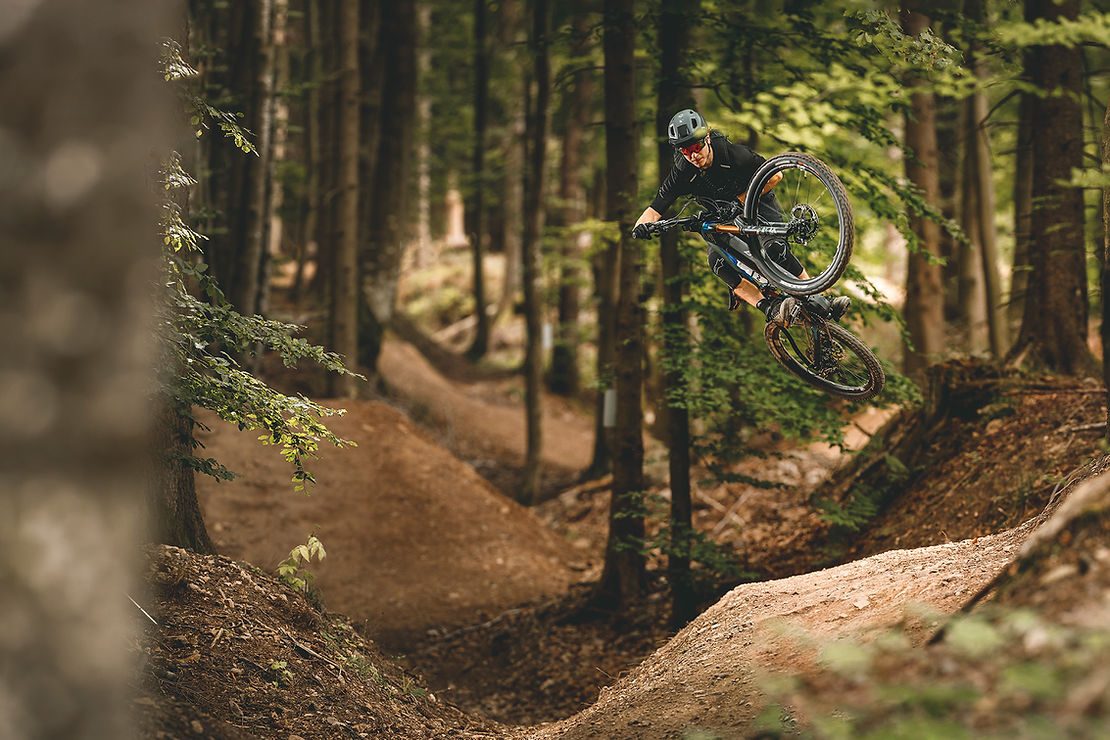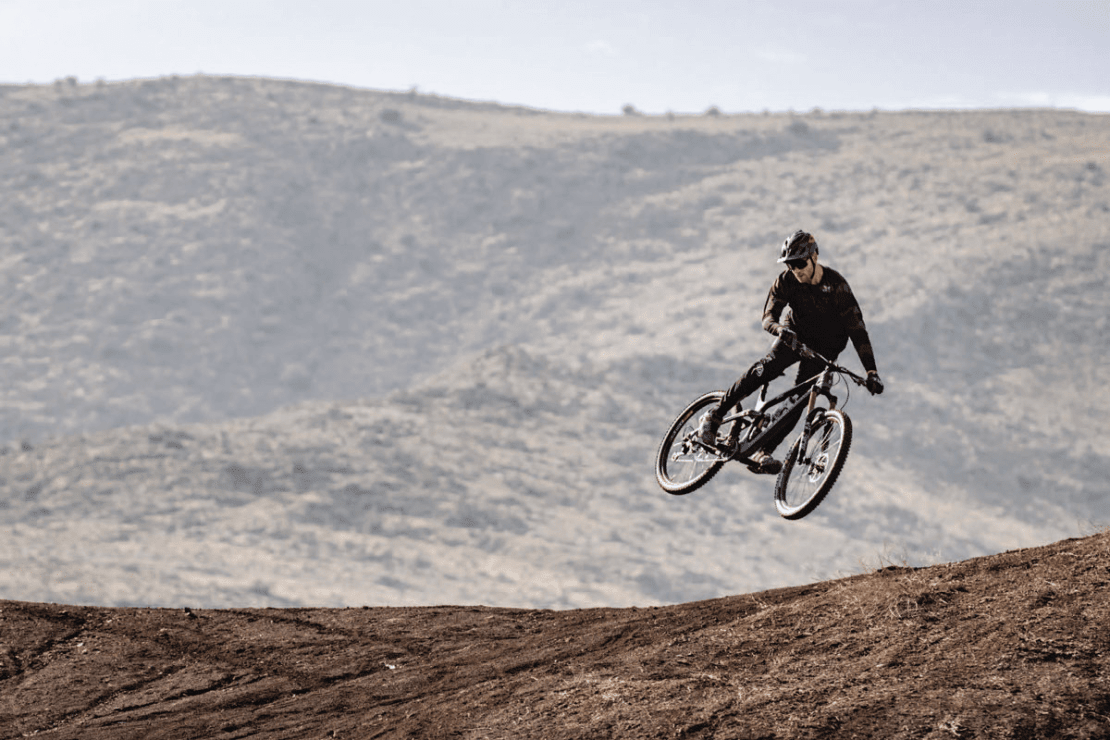Tech: Like a Coiled Spring
“Enduro-bro”. “Do you even enduro?” “Nice fanny pack”. Ever notice how just as soon as something is ‘fashionable’ it’s somehow even more fashionable to mock the thing (or, more likely, your riding buddy for adopting the latest trend)? That doesn’t remove the thing’s original attraction or advantage though. Take coil shocks. We’ve seen a number of top enduro racers over the last year or two running coil shocks, which has seen them adopted by everyday trail riders who realise that that it’s not just elite riders that benefits from coil shocks. So, before poking fun at your mate who now has a big orange spring in the middle of their frame, if you haven’t already, let’s consider if there is something behind the coil shock hype that might be relevant to a bike’s performance. Warning: this is going to get technical so if you don’t geek out on bike-performance, the following is probably going to be worse than watching paint dry…
Back in The Day
Before I start, it’s worth a bit of an anecdote about how my appreciation for coil shocks happened by accident. My first coil shock came with my 2005 Turner 5 Spot, which I bought used in 2007. The shock came with the frame and before I even rode it I concluded that ‘coils are for DH bikes’, and it would be ‘soft’ and therefore pedal poorly, especially uphill. So I bought a Fox RP3 (tuned by Push) to replace the coil before I even rode the bike. Guess what? Once I’d ridden both I found that the coil shock outperformed the Pushed Fox RP3 in every way. Because I’m a bike-nerd from way back, I even went to the extent of attaching my helmet-cam to the downtube and filmed the two shocks on the same piece of track. It confirmed what I felt riding the bike: the coil was way more active over small bumps, it used its full travel more effectively, yet it also remained more composed and wallowed less into its travel when climbing steeply. And there were fewer seals to blow up. On that bike I also had one of the original coil sprung RockShox Pikes and I still consider that to be the best piece of suspension I’ve ever owned in terms of its performance and reliability for the time. That was more than ten years ago, and I’ve been a fan of coil shocks ever since (but I’m usually riding test bikes now so I probably ride air shocks more).
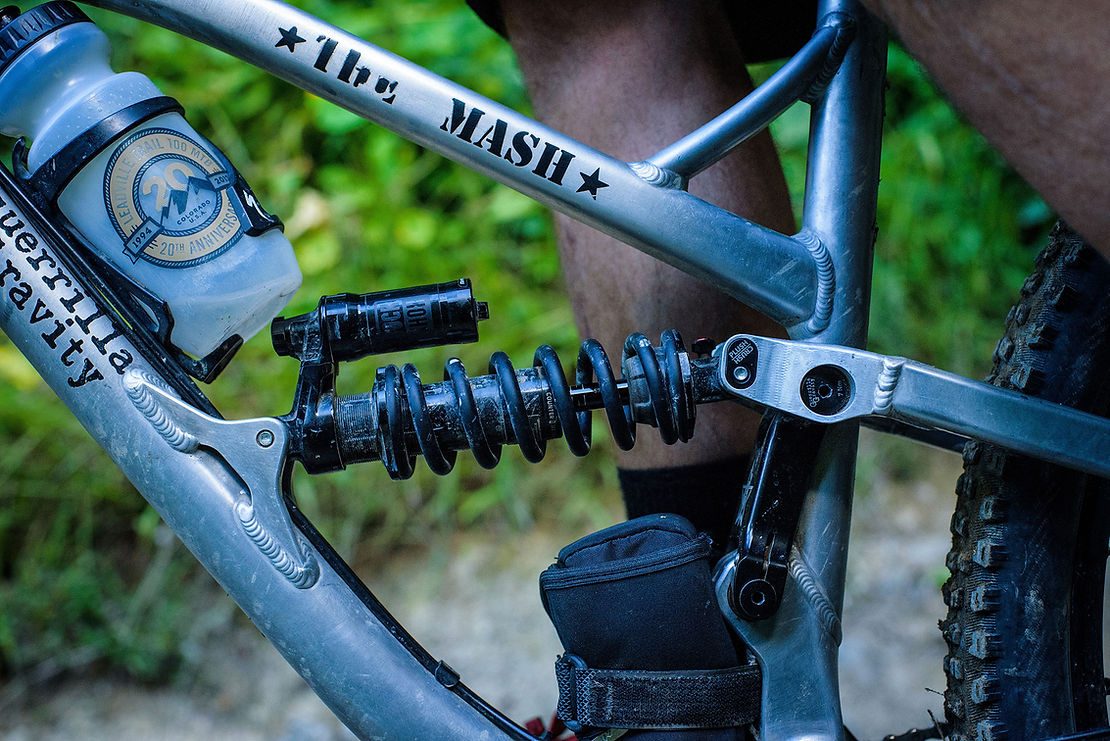
Nerding out on Springs
Of course, in the last decade air shocks have improved drastically. Claims of ‘coil-like performance’ abound with each new air shock launched to market. To an extent it’s true. Air shocks of today, with their larger, but tuneable positive chambers, larger negative chambers and slippery air seals, are more ‘coil like’ than ever, if not quite yet linear (more on that below). Also, air shocks rarely blow an air seal these days, whereas it used to be a regular occurrence, so their reliability is greatly improved too.
So, what does it mean to have a coil-like feel? What you might have heard before is that a coil shock has a linear spring curve. What does that mean? It means that at the start of the stroke, if it takes 400 pounds of force to compress the spring one inch (I’m using imperial because coil springs are measured in pounds), it will take another 400 pounds (800 pounds total) to compress the second inch and so on until the shock bottoms out at, for example, three inches of shock stroke and 1200 pounds of force. Air doesn’t compress in that linear way, it gets harder to compress further through the stroke, so if the first inch takes 400 pounds, depending on the size of the air chamber, it might be closer to 1600 pounds at the end of the three-inch stroke – even more if the shock has some volume reducers inside. This is what is meant by a ‘progressive’ shock rate. Of course, that’s not all…
Nerding out on Frames
Each frame’s suspension layout has its own linear or progressive behaviour too, independent of the shock choice. Ideally, you want the frame and the shock to be complementary. A linear frame-rate mated to a linear shock will make the whole package potentially too easy to bottom out and it won’t work very well for many riders, though it might for really lightweight riders. Having said that, a custom-tuned coil shock, like Push’s Elevensix, can take account of a linear frame-rate and produce a shock rate complementary to it. Conversely, a really progressive frame-rate mated to a progressive air shock (say one with the positive chamber stuffed full of volume reducers) will ramp up very rapidly so for many riders, they’ll never get anywhere near full travel, despite wallowing around in the mid-travel a lot.
So yeah, it’s complicated. But if you have a frame well suited to coil shocks (I’d list Santa Cruz, YT, many of the Intense range, Scott Bicycles, Giant Reigns, amongst many others) what do you stand to gain from a coil shock, and what might you lose?
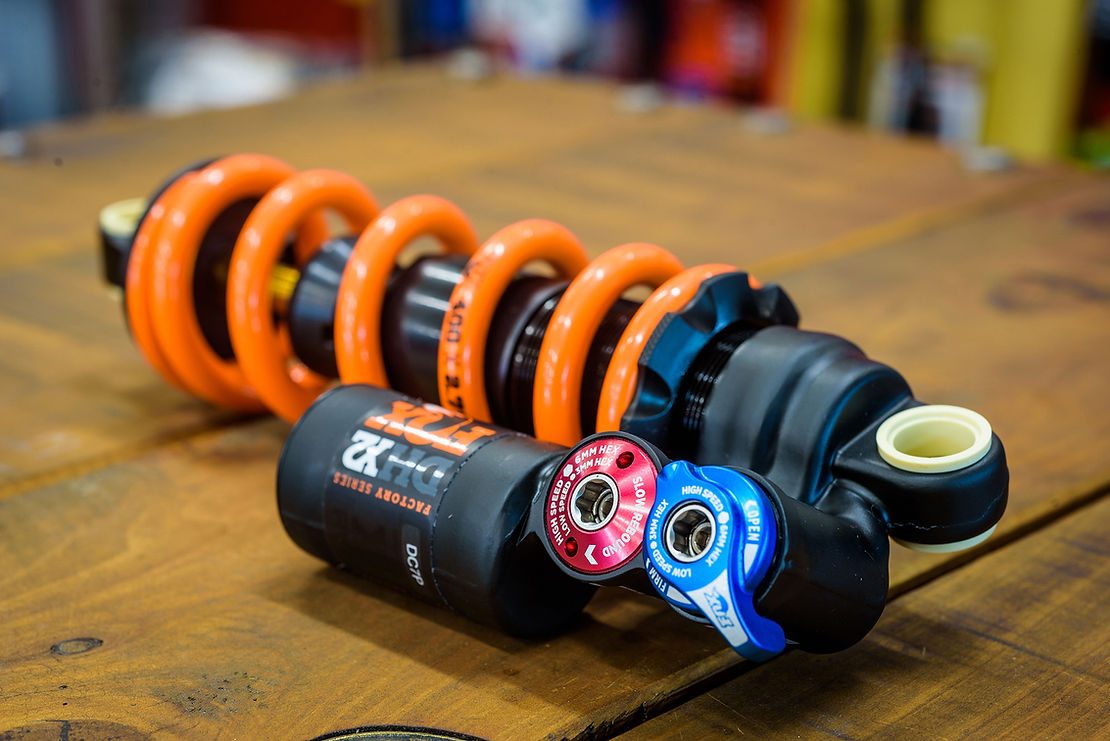
Possible Gains
Thanks to fewer seals, coil shocks have very little stiction and so are better at taking out the little chattery bumps, providing better traction and comfort. Some riders liken it to feeling like riding with a slightly flat tyre (but without the sidewall folding) because what should be chattery bumps just seem to disappear. Better traction helps your bike stay on line around rough corners and helps you slow down by letting the tyres grip rather than slide under braking. Comfort might not sound that important, but it can play a big part in how enjoyable a ride is, or how successful a race is. If you feel your hands and feet are rattled to pieces ¾ of the way through a ride or a race, your ride will start to suck and you’ll either be slower or risk crashing.
As well as more traction and comfort, a coil spring also falls into its middle-travel less readily (also called ‘mid-stroke support’) and can therefore provide better climbing, especially up steep climbs, and delivers better support when pushing the bike into corners. This is the part that I think a lot of riders misunderstand (I know I did until I rode a coil shock): if you’ve got the right weight coil, coil shocks provide more mid-stroke support, not less. It’s common for riders looking for more mid-stroke support to add volume reducers to their air shocks. But once you’ve lowered air pressure to still allow for full travel, what you’re likely to find is that mid-stroke support is lessened, not increased. If you don’t drop air pressure, you’ll simply not be able to access all the travel your bike has to offer.
A coil shock (with the right spring for your weight) will make their full travel more available, as opposed to air shocks which will ramp up harder at the end of the stroke (because, progressive), though this could also be a con, depending on how you ride and what frame the shock is fitted to.
Coil springs don’t get hot, and aren’t affected by changes in altitude. Warm air is harder to compress, and make your shock feel more harsh at the bottom of a run compared to the top.
Possible Losses
Coil springs are heavier. You’re likely to add in the order of 400 grams (the weight of the metal coil) switching to a coil shock, all else being equal. Is that weight something you can notice riding? No, it’s not, it’s a non-issue (our own testing with a power meter, published back in 2014, which mirrored what the physics would tell you, showed I needed an extra 0.25% (as in ¼ of a percent) increase in my power output to carry an additional 450 grams and go the same speed uphill).
Adjustability. If you put on or lose more than 5kg or so, you might need a different coil spring. They're not the most expensive thing to buy if you do need another.
Bottom out resistance. Depending on your frame, you could find that the linear nature of a coil spring means you bottom out the shock too much. Having said that, some of the most linear frame rates (like Specialized) have been run by very aggressive and fast riders on the EWS circuit with coil springs, so depending on the shock, you might find sophisticated high-speed compression damping can counteract this.
There is one other cost though, which is the hardest to describe and probably the most important for certain riders; that is ‘pop’, for want of a better description. It’s easier to get an air shock to bounce the bike off the ground when you want it to, which is down to its progressive nature(when the bike doesn’t bounce of the ground when we don’t want it to, we’d call this ‘traction’ or the bike being ‘planted’). This is not as easy to remedy as just running lighter rebound damping, it’s something else that’s oddly subtle yet also obviously felt. Ride a coil sprung shock, even on a bike you’re not overly familiar with, and you’ll probably feel it. Really active riders who like to jump off every trail feature (like ex-BMXers) are probably going to miss the pop the most.
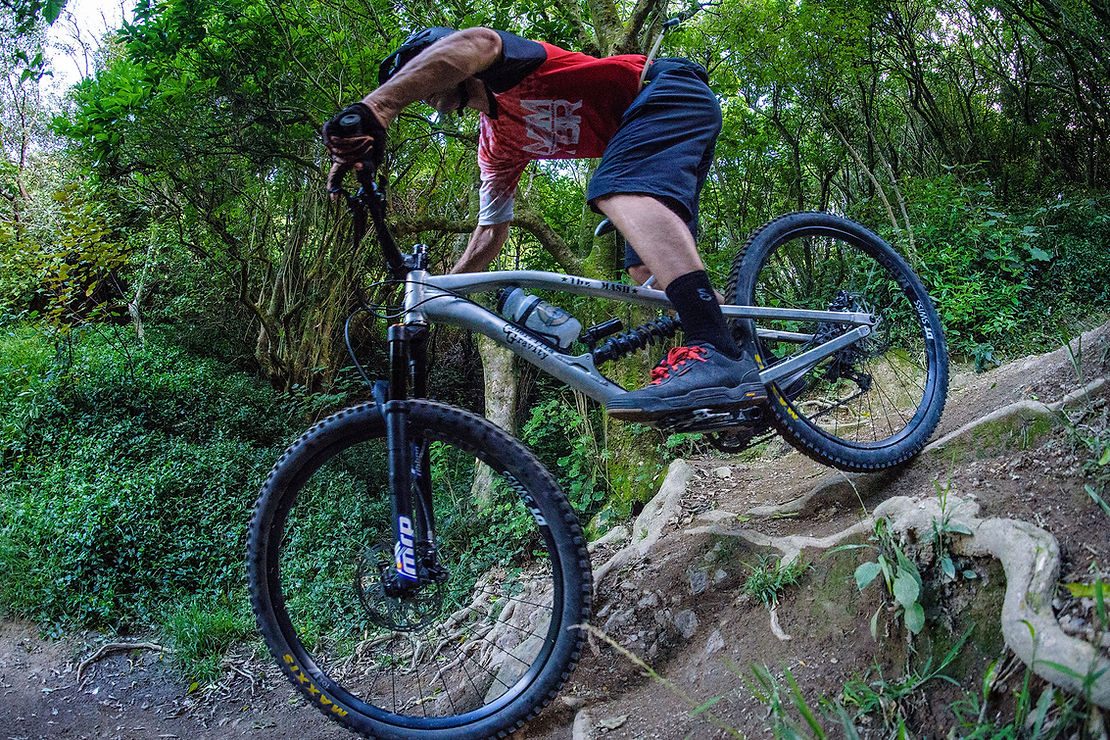
Wrap up
Is a coil shock worth considering? That depends. If you value traction and comfort, you prefer a firm middle supportive feel over a ‘forgiving’ or ‘soft centre’, you’d like to get to that last bit of travel a bit more easily, and you don’t mind losing a bit of pop, a coil spring is probably going to make your bike ride more like you want it to. That’s especially true if you I know you know you’re going to be riding rugged tracks or tracks where traction is needed. If, on the other hand, you regularly bottom out your air spring (assuming you’re not running the air-can with no reducers), or you love to bounce from one trail-double and root-kicker to the next, then a coil might detract from parts of your riding experience.
Words: Carl Patton
Images: Digby Shaw
Trail Builder: Magic Mondays
Mondays aren’t known by most as a favourite day of the week – but for the 20-odd Dunedin riders working hard to build and maintain the Whare Flat network of trails, it’s by far their most productive!
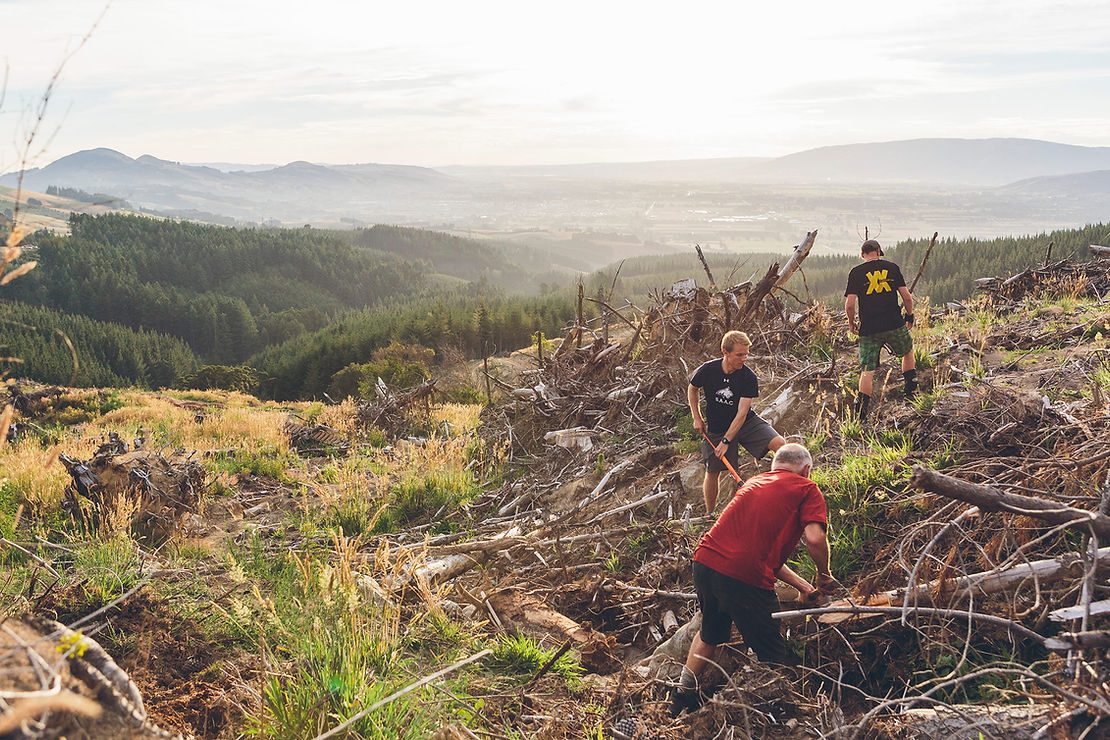
“We’ve been digging Monday nights for the past three years,” says Mountainbiking Otago member and committed track builder Gareth Hargreaves, who has been buildings trails in the area for more than a decade. “We started with an uphill track called Fir Trader, then moved onto our newest downhill track Bermageddon, and now we’re starting the rebuild of a local favourite, The Green Mile.”
Blank Canvas
More than 13 years after he built one of the area’s inaugural tracks, Snakes and Ladders, Gareth is the first to admit that his vision and building skills have come a long way, and he’s looking forward to leading the crew on its new challenge.
“The Green Mile was quite a flowy track with some skill-testing sections, which made it quite popular with a wide range of riders,” says Gareth. “Since the area was felled early last year, Dunedin mountain bikers have been looking forward to its reincarnation and so have we!”
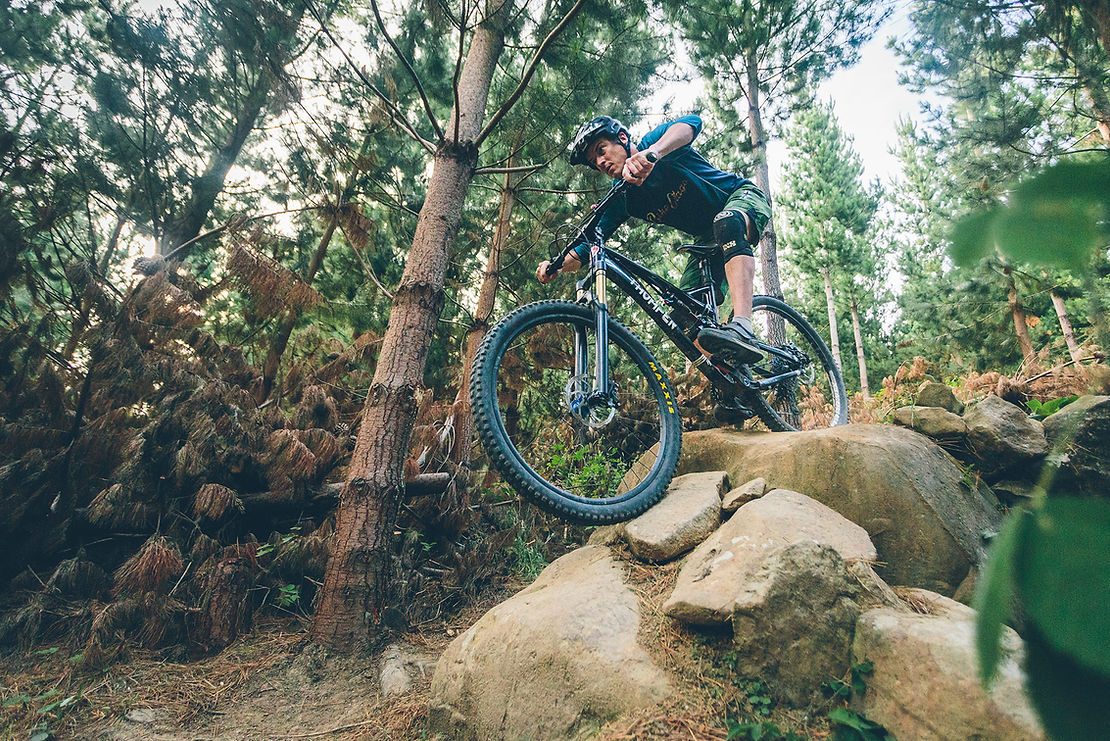
As soon as the crew put down their tools following the last metre of Bermageddon, they were already brainstorming how to rebuild a “bigger and better” version of The Green Mile, with financial support from Trail Fund NZ.
“There’s almost nothing left of the old track, so it’s pretty much a blank canvas, which is both exciting and intimidating,” says Gareth. “Both Fir Trader and Bermegeddon had their routes largely defined by the surrounding bush, so this is quite different.
“At this point we’re busy mapping out the line. We’ve actually found that the biggest challenge of building in a felled area with no existing track is not having direction dictated by the terrain – it’s all up to us.”
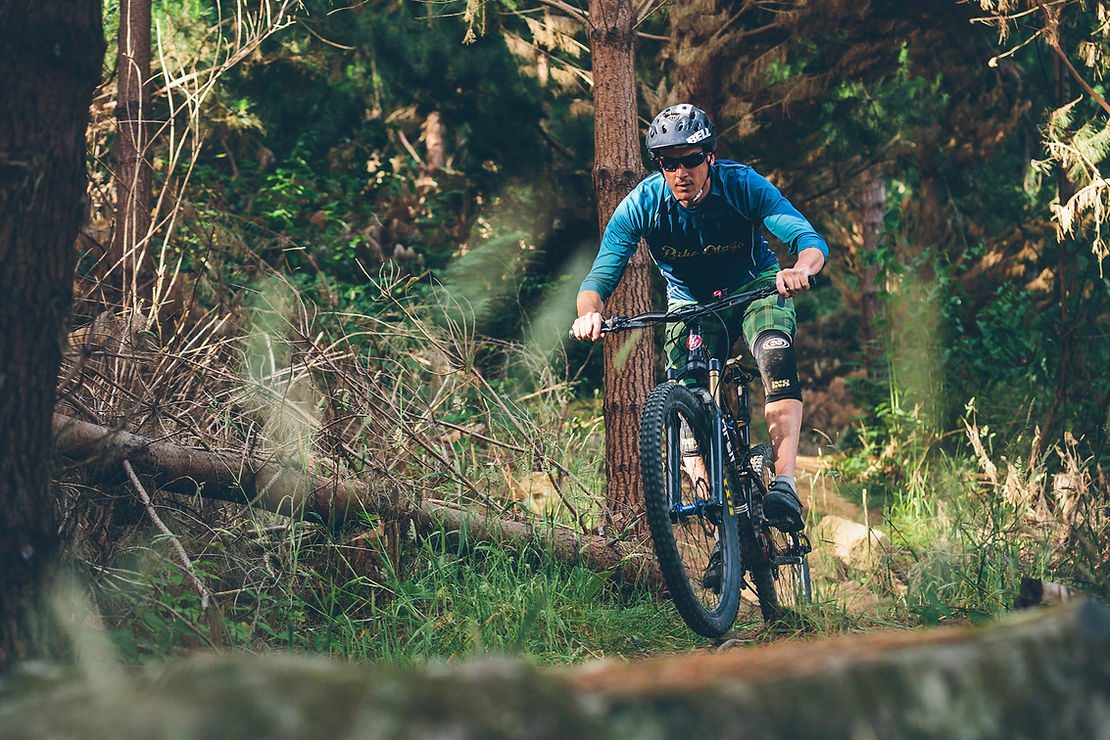
Or almost. When City Forests felled the area, Gareth says they kindly did their best to retain features the club has put a lot of time into – including a big bermed wall ride and some rock sections – which will be incorporated into the trail.
The Green Mile will also be extended from its original length of 850m to approximately 1600m, and the plan is to build a similar style track – flowy with some skill-testing sections.
“That’s the general plan, but it’s amazing how everything comes together throughout the build – everyone brings new ideas to the table and the end result is often much better than if one person had built a track on their own.”
Raving Reviews
Whare Flat has been growing steadily over the past decade and now boasts approximately 15km of tracks. The club’s hand-built uphill track, Fir Trader, was completed in 2015 and is very popular with mountain bikers and runners as an alternative to the steep 4WD track.
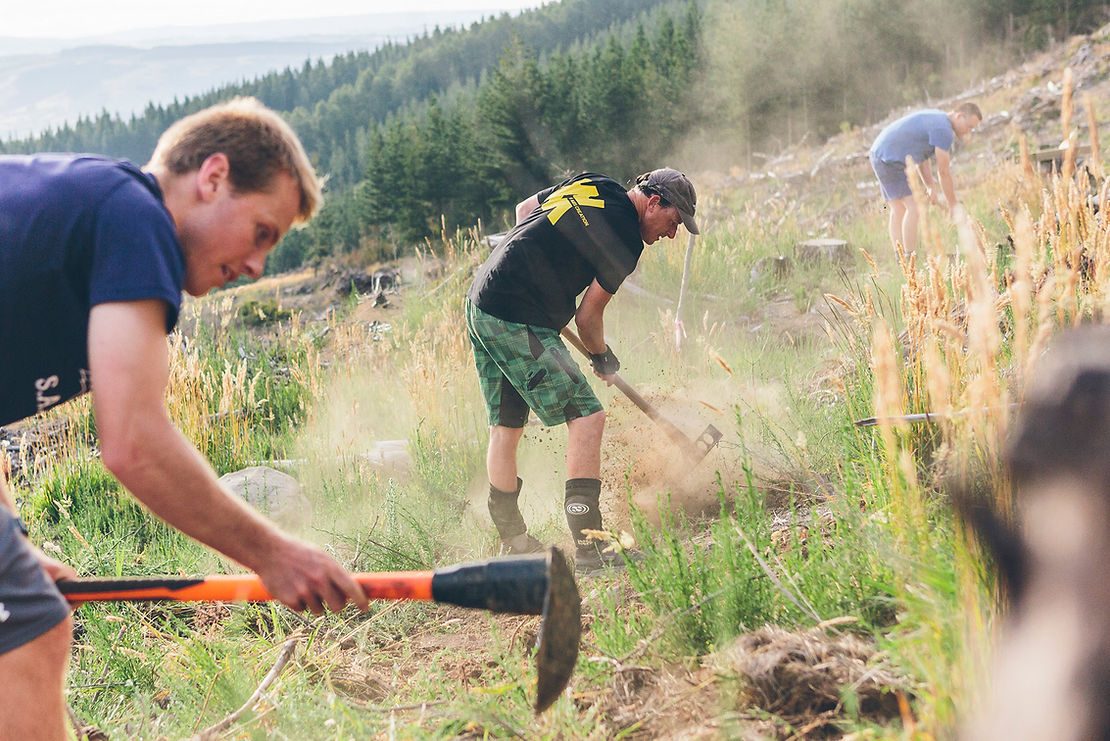
Bermegeddon, a hand-built Grade 4 downhill trail which also received support from Trail Fund, has been open to the public for less than a month but is already a local favourite, with more than 400 Strava runs.
“I’m obviously a bit biased but I think it’s a barrel of monkeys to ride,” says Gareth. “We’ve used the natural environment as much as possible and features include berms, rock rolls and steps, table tops and a few gap jumps that you can roll around if necessary.”
Words: Meagan Robertson
Images: Jemma Wells
Story: Miramar’s Dark Grey Waves
The old pump track in Miramar has had a transformation. No longer mere mounds of dirt, the perfectly crafted waves are now coated with a handsome layer of dark grey asphalt. It’s part of a new wave of sealed tracks popping up around the country, following an overseas trend which has become increasingly popular in recent years.
The Miramar track is an especially nice example. Sitting in a clear space on top of the Miramar peninsula in Wellington, it provides stunning views of Mt Victoria and Haitaitai across the deep blue expanse of Evans Bay. Planes regularly fly through the space on their way into the nearby airport.
Local mountain biker Paul Gray is often found up there at the end of a busy weekend. “It’s usually a Sunday evening type thing after we’ve ridden too much in the weekend, and want somewhere to hang out and have some beers, and try some stupid stuff.” He says the track is “quite progressive” and attracts everyone from little kids to pretty handy riders. “You can sort of do anything around it; you just start linking it up and there’s lots of sneaky lines and jumps and it opens up quite a bit. I’ve seen the same kid up there every time I’ve been going up, and he’s just getting better every time, so it’s pretty good for those young guys.”
Since the pump track was sealed at the end of August, it’s been getting a lot more use, and not just from mountain bikers. Ben Wilde says he's seen a real mix of skateboarders, kids on scooters and families with small children start using the space, as well as the dog walkers who have been going up there regularly for over 30 years. Despite the range of different interests, Ben says there’s been “zero issues” with sharing the space. He says he was “taken aback” by how popular the pump track has been since getting the layer of asphalt. “You can have 20 or 30 people up there, which is great. I think pump tracks are a hugely efficient use of space, and given the response there’s been to it, it would be great to see more of them around the city.” Ben is a co-founder of the Miramar Track Project (MTP), which was set up almost ten years ago when he and a couple of others got sick of the drive across town to Makara Peak to do their digging and riding.
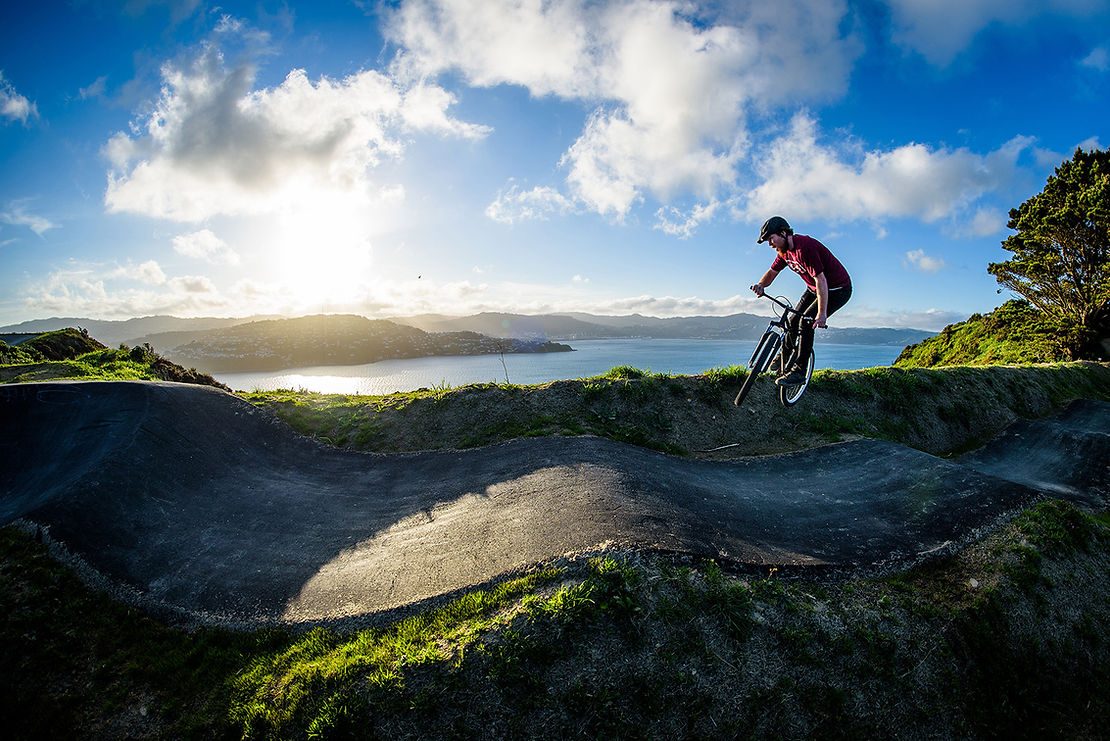
Since then a tidy wee trail network has been put in through Centennial Park, built by volunteers determined to make the best of the 100-odd metres of vert on offer. The trails offer a gentle climb up on a shared-use trail and a couple of mountain bike-priority options back down, such as the long-time fan favourite Jailbreak. The first pump track at the top of the site was built about seven years ago and has been through several revamps since. The most thorough was at the end of April, when the Wellington City Council paid for a contractor to level the site and rebuild the pump track to a higher standard. Ben says the idea for a major overhaul came from Steven Peters, then a council ranger, who made the suggestion about 18 months ago. But a joking comment from Russel Garlick (another MTP co-founder) about how good it would be to have the track sealed put the idea in people’s heads.
Ben said they didn’t have any hope of raising the funds it would need, which was tens of thousands of dollars. “So it was well beyond running a few enduros and selling some sausages.” Luckily, the Wellington City Council were into the idea, and put up the $40,000 needed to get it asphalted - on top of the $16,000 they previously fronted for the April rebuild. They also had hydro seed (spray on grass seed) and other landscaping done in and around the track. Both the April overhaul and August sealing work was done by the New Zealand branch of Velosolutions, a Swiss-based company owned by Claudio Caluori - the man famous for his hilarious commentated preview runs of Downhill World Cup courses. The company have become specialists in sealed pump tracks. The New Zealand owner-partner is Rotorua-based Craig Pattle, who says Velosolutions is nearing 100 such builds worldwide over the last decade - about ten of which he has been involved in personally. He says they had to make a couple of changes to the Miramar track before they laid down the asphalt, as the seal makes it run a bit quicker.
About 80 tonnes of asphalt were required to seal the track. That work was done over a few days by a crew of dedicated volunteers, who took time off their day jobs to get involved in the hot, physical work with only free pizza (courtesy of Burkes cycles) and satisfaction in return. Velosolutions were given free reign with the design of the track, apart from a request for multiple loops to be included. They came back with something that rides well in both directions for people at all skill levels. Craig says getting the design right is a matter of trial and error, and years of pump track building experience. “We’re pretty sure we know what works by building these tracks all around the world.” He says as well as looking better, the main advantage of the asphalt was less maintenance. Dave Halliday was one of the key figures in the publicly-funded project.
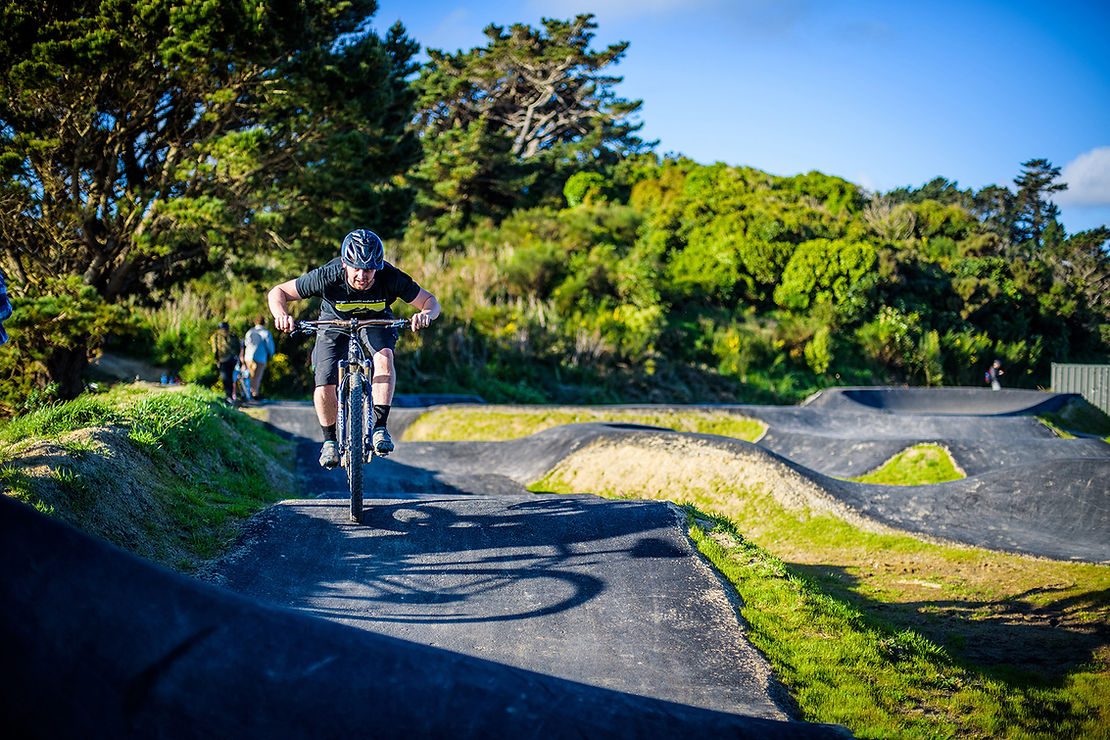
The Wellington City Council project manager for parks and recreation says for the council, paying for the sealing was worthwhile because of those maintenance reductions, which takes pressure off the community, while making the track able to be used by a wider range of users, like skateboarders and scooter riders. “It’s quite apparent now that with a sealed track you get a better product, so that additional investment is worth it I feel.” He says from a council point of view, it’s important the pump tracks can be used by people from a range of age and skill levels. And there could be more asphalt pump tracks in the future, if the council’s budget allows. Dave would like to see a recently upgraded track in Tawa sealed, but there isn’t any money for it at the moment.
For Ben and the other MTP trail builders, the zero-maintenance aspect is massive. “The problem with dirt pump tracks is they deteriorate quite quickly; all the stones come through and they become quite rough. “So you basically have to constantly look after them, and when you’re a volunteer organisation, or even council, that’s not something anyone wants to sign up and do.” He would like to see the concrete area next to the track resealed with a smoother concrete, and some toilets added, but those upgrades are not on the council’s radar at the moment.
A project like this couldn’t happen without strong relationships between the trail builders and the local government. Dave says a very strong working relationship has developed over the years. “Those guys put a lot of effort in, they’re very self-motivated and we assist where we can.” Ben says the council have been very supportive. “They get frustrated with us of course, as a community, when we go and build and ride in places we’re not supposed to. But on the whole, the relationship with the community and Wellington Mountain Bike Club is really strong.” As for the trail network, there’s a feeling it wouldn’t be a good idea to put more track into the small reserve - though maintenance and planting work is ongoing. About 500 native plants a year are put into the hill by the trail building team.
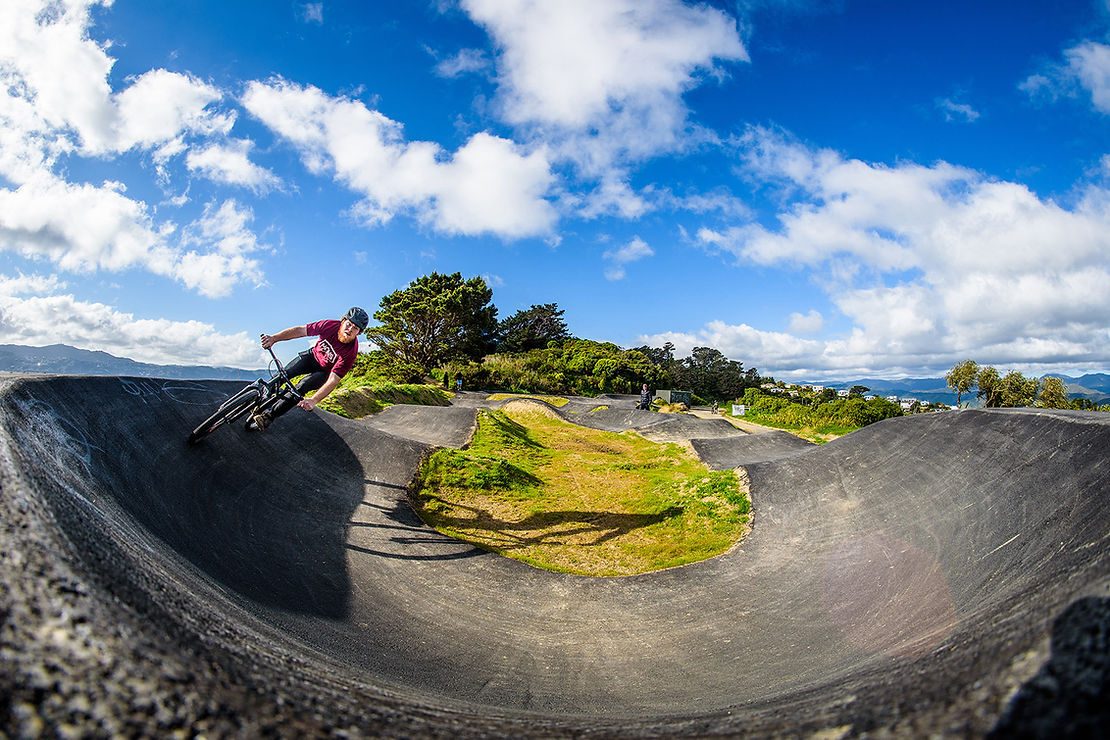
Ben says the MTP is working with the council to look at trails on the western side of Miramar Peninsula. He says it’s been a real plus for the community to have the recreational space, but one of the “big tragedies” is a lack of action over the adjacent Crown land, made up of the empty Mt Crawford prison and about 76 hectares of ex-Defence Force land which was handed over to Land Information New Zealand in March. They plan to turn the vast bulk of it into a public reserve - a promise which has been made since 2011 - but the final decision is dependent on funding availability. Group manager of Crown Property John Hook says work is underway with DOC and the council to see what needs to be done to set up the reserve.
“Subject to the appropriate funding being confirmed, creating the reserve is estimated to take up to four years and the property will not be opened to the public until the work has been completed.”
Despite all that potential being locked away currently, even the small spot they have has become a real feature, Ben says. “It’s been a feature of some peoples’ decision to live out here. I know people that have just decided that Miramar’s okay now.”
Words: Michael Hayward
Images: Digby Shaw
Video: The Process X: It's So Sick
BREAKING NEWS! The Process X has been spotted out in the wild. We tap into field reporters Miranda Miller and Connor Fearon to get their impressions of the bike, what life was like before X, and where they see themselves in the future.
“Riding the Process X is so sick.”- Connor Fearon
“It’s friggin extreme.” - Miranda Miller
“Me and the Process X are gonna take on the world, one race at a time.” - Connor Fearon
“I don’t know how I lived without it, to be honest.” - Miranda Miller
News: The all-new Norco Shore
The mountains of Vancouver’s North Shore have ignited imaginations for decades - an enchanted realm formed by nature and hand sculpted with trails of triumph and confronting challenge.
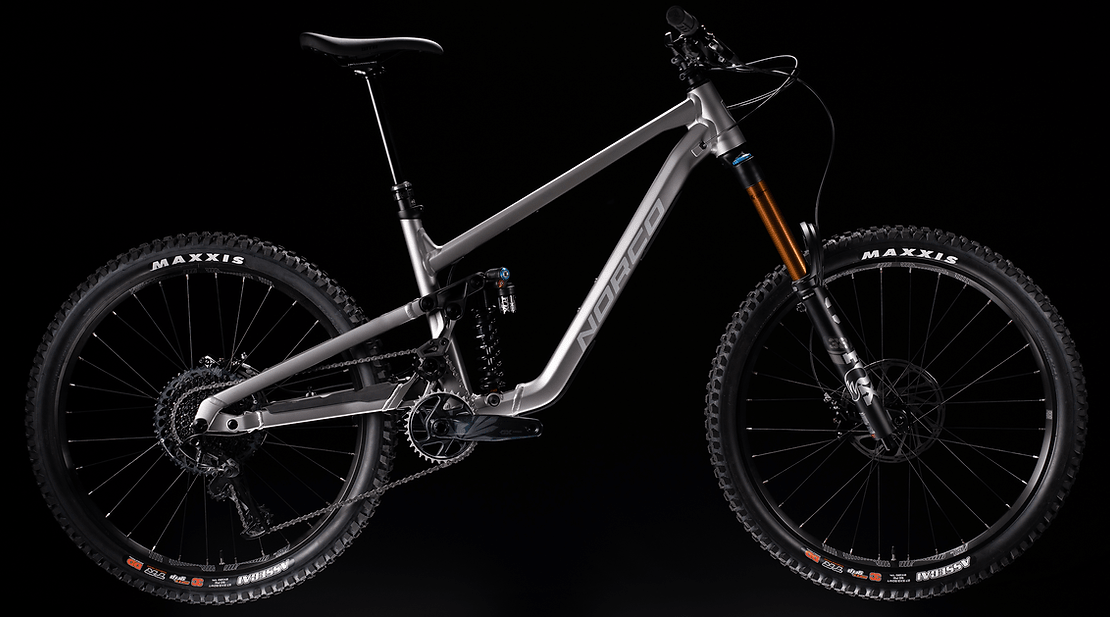
There is a life force at play here - intertwined with every rock, root and trail relic. It draws you in and alters your perception of the impossible, leaving an undeniable, indelible mark.
It’s where boundaries are broken and limits hyperextend. Where gravity meets technique and technology amplifies instinct to exploit every scrap of untapped potential.
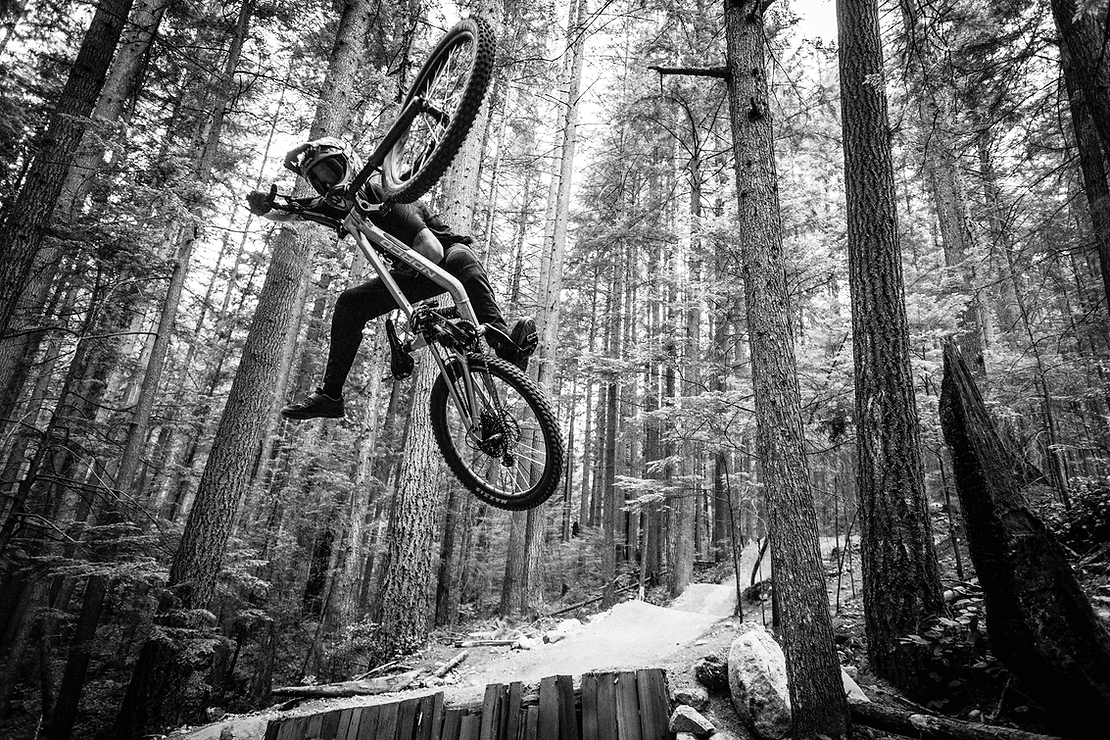
Twenty years have passed since we drafted the blueprint for the original Shore. The mountains of North Vancouver remain steadfast, demanding evermore from riders and their equipment. They are the ultimate inspiration and proving ground for the sublime big-mountain ride that’s driven by the mystical place that started it all, and demands the most from those who ride there.
The Shore uses Norco’s Ride Aligned™ Design System which matches each individual bike to the human who rides it, creating a customized Freeride platform that is both stable and balanced, allowing you to push harder. Using individual rider metrics, precise suspension kinematics, a proprietary app technology, you’ll align with your ride experience like never before.
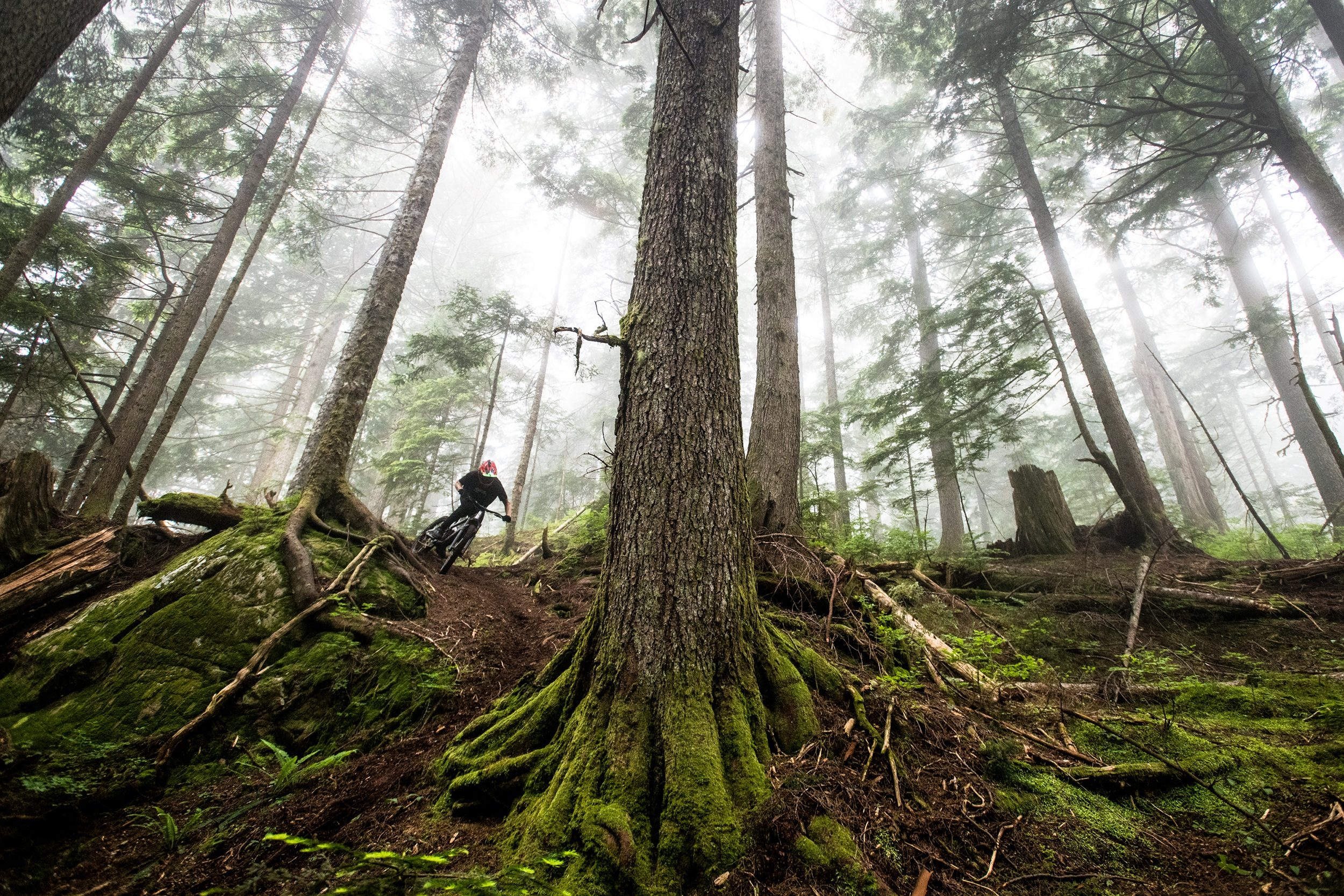
IDLER PULLEY
By integrating an idler pulley into an elevated pivot Horst Link suspension design, a rearward axle path can be achieved with minimal pedal kickback, and the precision coil-specific suspension kinematics ensure grip and support to boost jumps and shrug off deep landings on rough trails.
DYNAMIC PEDALING
Suspension design and rider compartment are designed to get the bike moving quickly on run-ins and rollers. Maximized pedal efficiency gets you to the top faster and conserves energy for the descent you’ve planned your whole ride around.
CHOOSE YOUR POISON
The Shore is available in two distinct configurations, depending on the type of riding you love. 180mm rear travel combined with a 180mm single crown fork and a wide-range 12-speed drivetrain for big, burly trail rides in the wild, and 190mm rear travel paired with a 200mm dual crown fork and a 7-speed drivetrain for big days at the bike park.
DURABLE DESIGN, EASY MAINTENANCE
Frame design, hardware and component decisions have been made specifically to keep the Shore on the trail and out of the shop – and when maintenance is necessary, it’s easy and quick.
Story: Inside Vittoria
Press Camps are generally held at glamorous places around the world - or at a company’s HQ. So, when I was asked to head to Thailand for the recent launch of Vittoria’s next-generation graphene tyres, I was more than a little surprised. But, as it turns out, this is where rubber is made…
Vittoria Tyres was originally founded in Italy, in 1953, and for almost 40 years the company manufactured all its tyres there. However, in the early ‘90s, the company was financially struggling. That’s when the current owners took over the brand and moved production out to Thailand.
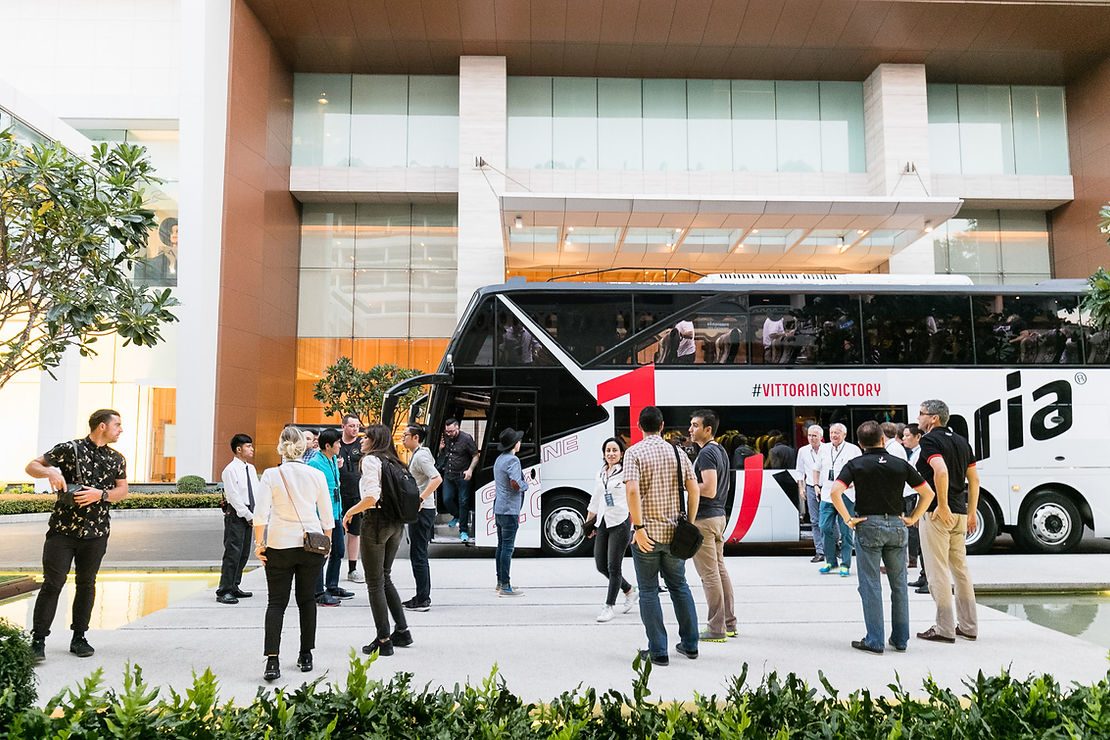
Since then, Vittoria has gone from strength to strength, with the brand now turning out millions of tyres each year. Their cotton tyres and racing tubulars have an abundance of history and have really defined the brand and set it apart from the rest. Lion Tyres is responsible for all of Vittoria’s production. . Back in ‘88 they were acquired by the same group of investors that would eventually come to own Vittoria, led by Rudie Champagne - the boss of Vittoria. Along with Vittoria, Lion Tyres have returned a good profit for Rudie and his co-investors. What’s even more lucrative, is that Lion Tyres only manufacture bicycle tyres and make rubber for a handful of other brands, some of which are Vittoria’s direct competition. This is nothing new in the bike industry, especially when it comes to mass-produced carbon frames and components,but they don’t simply re-badge their own tyres - they create a unique manufacture pattern (rubber, casing and compounds) for each different brand.
In Thailand, cycling press from around the world gathered in the lobby of a Bangkok hotel. It was early morning and the Italian staff from Vittoria’s head office in Brembate, Italy, were already on their third espresso! We all jumped in a heavily-branded Vittoria double decker bus and headed off to the first factory - Vittoria has several in Thailand and each is focused on one stage of tyre production.
After a few hours traveling (or shuffling) out of the madness of Bangkok’s traffic, we arrived at the first factory in Rayong. The bulk of Lion Tyres’ compounds are manufactured within this facility, which is based here because of the rubber trees growing in the region. Opening its doors in 2017, this is the newest facility in the group, and upon entry the ultra-clean environment was clearly evident. This place creates a ton of rubber, week on week. Although the manufacturing is mostly automated, to ensure a consistent product, there’s still strict quality control: white coats, clipboards, data entry and sample batches are all part of this process. Everything needs to be approved before sending the rubber off to the other facilities.
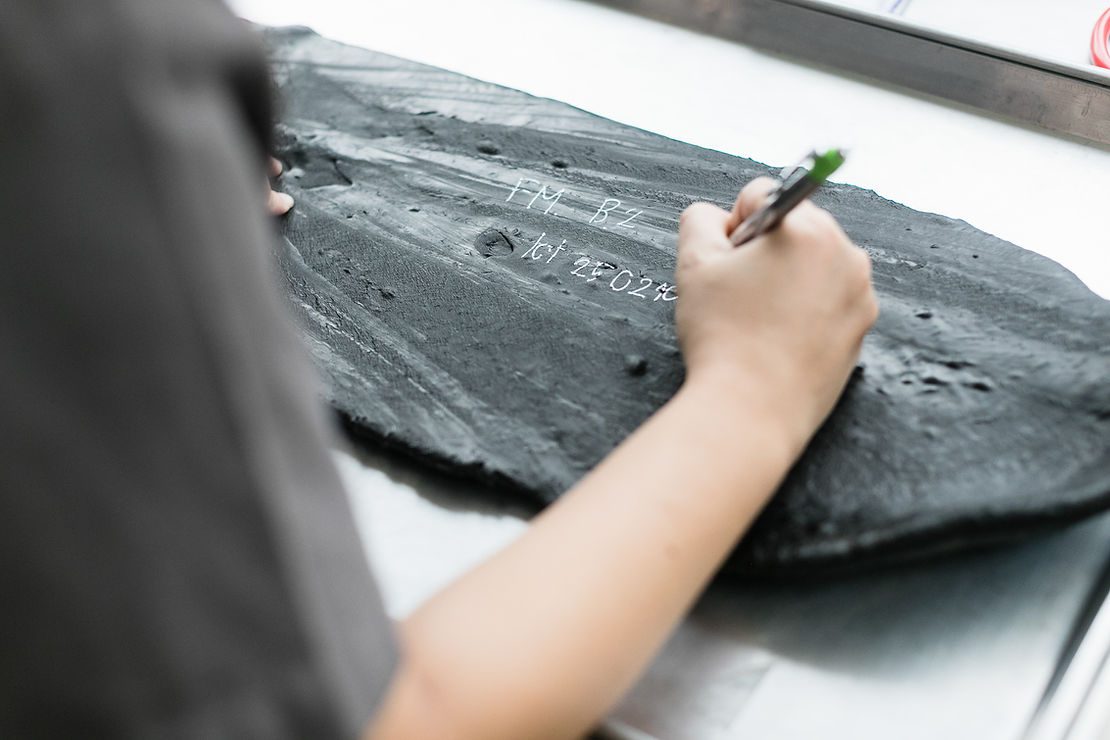
This facility also houses a few small research and development labs which can create small-scale, production-prototype rubber compounds in minutes. This means the Vittoria team in either Italy or Thailand can devise a new compound concept and receive a sample in no time. During my walk-through tour I spotted tyres being inflated on a rim to check over rolling resistance, leakage, puncture-resistance; and air leakage durability being measured consistently. Some of the larger testing equipment is left running for days, and is needed to gain vital data about Vittoria tyres.
Vittoria places a great deal of importance on their labs, however, the company also values real-world feedback. They have riders - from professional through to amateur - to test out their latest rubber. That said, the company ensures the in-house testing is as close to the real world as possible by using, for example, equipment that tests tyres braking in wet conditions. Rigorous testing of compounds means they are able to identify the best new compounds for different conditions.
Our second day saw us huddled in the hotel lobby once again - although this time it was the press needing that third espresso. We jumped onto the bus and headed to another factory, this time to see how the tyre process all comes together. Although this factory is situated closer to Bangkok, we still needed to hustle to our way through the morning traffic. Trust me, NZ doesn’t have anything on Bangkok’s traffic!
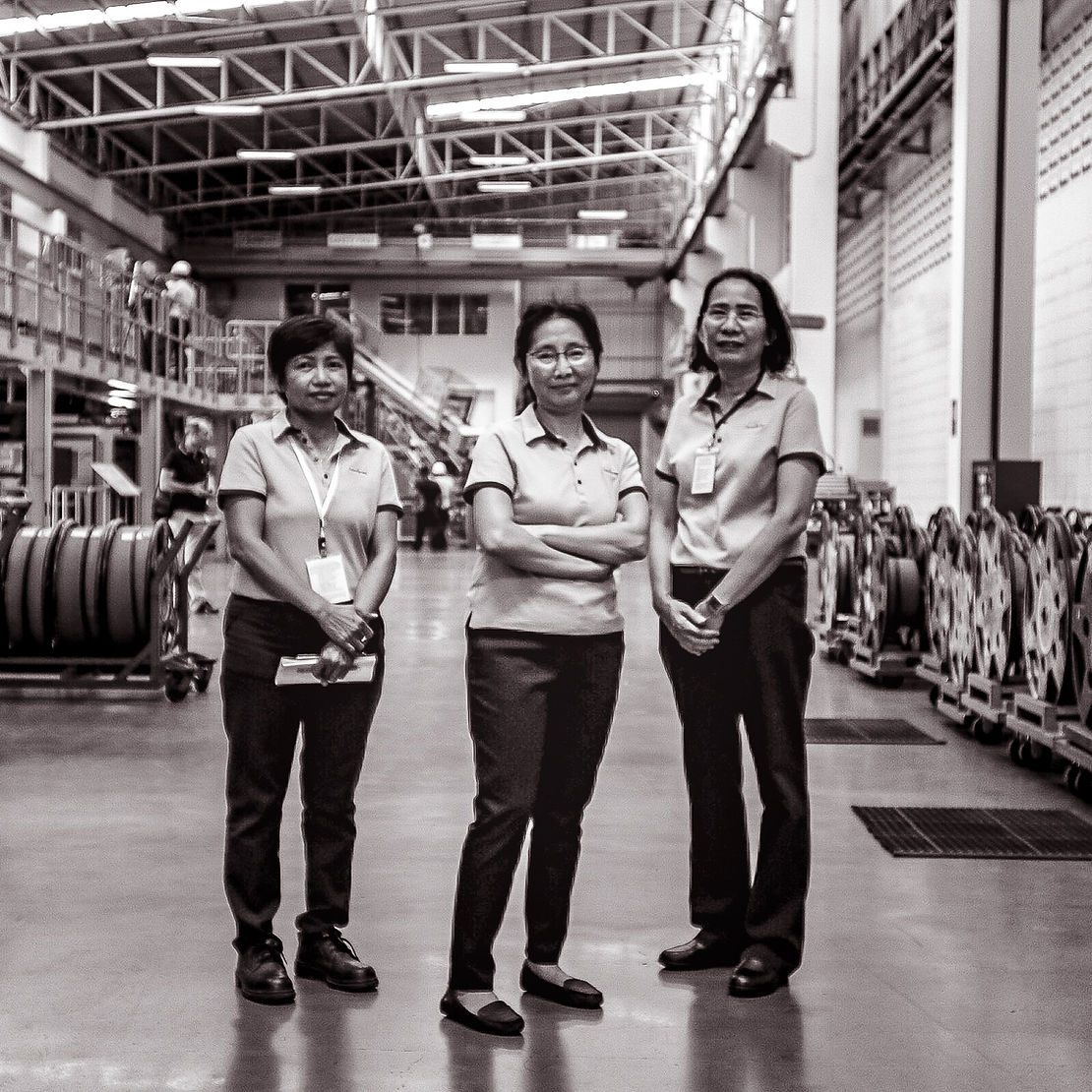
Inside the Bangpoo facility (which is actually two facilities side-by-side) the tyres are put together before being shipped off to riders around the world. We walk into another immaculately clean factory and straight away it’s obvious the staff have good morale. I don’t know if it’s because we’re there, but they all seem happy, chipping away on certain tasks around the factory. It’s clear the leader here is Ms Penparn Kiatamornvong - she’s about five foot nothing and is the Managing Director of Lion Tyres’ factories. She has a lovely nature and greets all the staff with respect. They all seem to know her by name - well, from what I can tell, seeing as I don’t speak Thai - and this is no mean feat seeing as there are over 1500 staff across the facilities in Thailand. But Kiatamornvong has a good, albeit no-mess attitude and you can see why there’s so much respect for her.
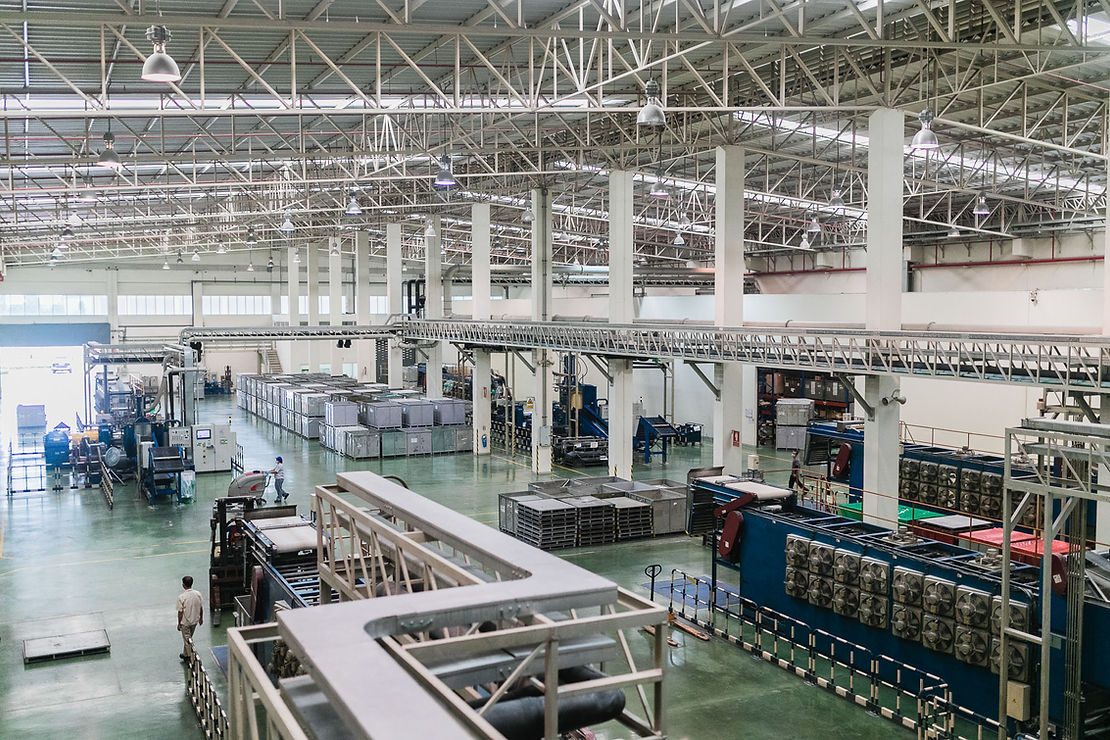
It’s inside this plant that the tyre compounds are merged together - Vittoria is the only large company to use four compounds in a single tyre. The machines here are bloody impressive. A few years back (2015), Lion Tyres commissioned a piece of equipment capable of combining four distinct rubber compounds during the extrusion process. From what I understand, this is the only one of its kind in the world at present. You can see they put a ton of effort into ensuring the tyres meet a certain standard, and the quality control process is evident throughout the whole procedure of merging the compounds. It wasn’t just at this plant - all the places we visited had a strong emphasis on the quality control process.
The other facility in Bangpoo was a real eye-opener, being a very labour intensive environment. I know ‘handmade’ is a rarity in ans age of automated production, and fewer brands are holding onto their heritage as they search for cheaper, quicker and less labour-intensive production options,but inside this facility I witnessed tyres being glued and sewn together by hand. The guy running this production line probably has no idea that one day this tyre might claim a World Tour victory.
For me, this sums up the time, energy and effort Vittoria put into the process. It’s not unlike training, a process that also requires the application of time, energy and effort by the person involved. After all, only then will you reap the rewards. And, with Vittoria’s rich history and reputation, you can expect the rewards to keep on coming.
Words & Images: Liam Friary
Story: Ride Different: A Fresh Take on an old Favourite
For a few years, either side of the turn of the century, Apple used a tagline for what was at the time, the underdog Macintosh computer: ‘Think Different’. It summed up their ethos at that time. Since then, the brand’s success has seen its culture shift significantly but the underlying directive to ‘think different’ has always appealed to me. Why roll with the status quo? Why not try new experiences? Use things for purposes other than what they were intended for? That kind of attitude. It’s a mindset that has seen me in some unusual scenarios: travelling internationally to a road race, but writing mostly about off-road riding; attending press events and riding everything on offer - from fixies to fat bikes to XC to DH rigs. My latest venture was to take a couple of mates to an iconic native forest trail I know well, on a different kind of bike... of the electrically assisted variety. But first, some background...
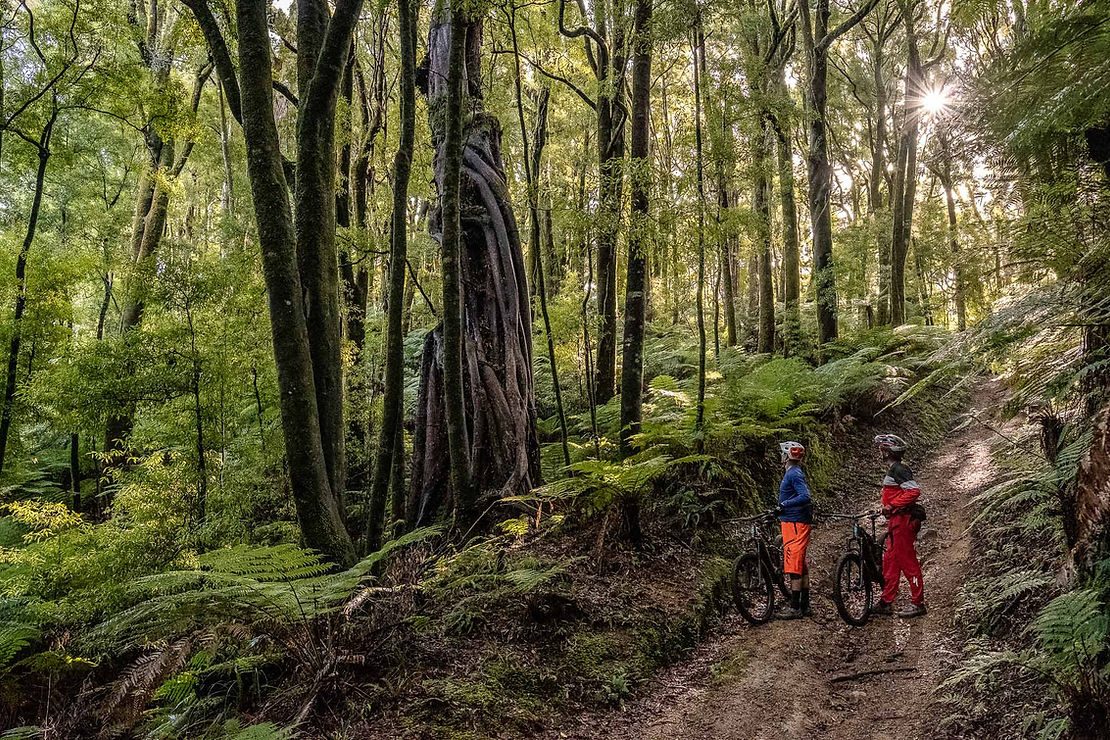
The People
Te Urewera is the traditional home of the Tūhoe people. The Tūhoe signed a deed settling the tribe’s claims at the Waitangi Tribunal negotiations. Of more importance than the fiscal compensation was the fact that the Tūhoe were returned greater control over governance of Te Urewera. This means that in current times the area is administered by the Te Urewera Board, which is a shared responsibility of Tūhoe and Crown entities. The end result of this, is the existence of the Pua a Tane Conservation Park.
Located between Rotorua and Taupo, with extensive ranges of rugged native bush, the appeal for mountain bikers is obvious. A network of well-established tramping tracks and Department of Conservation (DOC) huts date back to the ‘50s, when the primary human interaction with the forest were hunters employed to eradicate deer and other pests. In more recent times Tūhoe and DOC have been leaders in allowing and encouraging recreational mountain bikers to experience what is on offer in the park, with legal access to the Moerangi and Whirinaki trails.
The Critters
When liaising with DOC and Maori landowners as we prepared to complete this ride, we entered somewhat of a rabbit hole when discussing DOC’s role in caring for the area in which the Whirinaki and Moerangi trails reside. Talk turned to DOC’s goal of protecting the whio - NZ’s endangered native blue duck. Neil Hutton, our contact at DOC, passed on an astute observation about the whio: “A lot of New Zealanders have only ever seen a whio on a $10 note… Whirinaki is one of the best places to see whio in real life”.
Stoats have been identified as the primary cause of the whio’s decline in the Whirinaki. Although scientists of the time warned they would be a threat to native birds, stoats were introduced to New Zealand in 1884 to control rabbits and hares. At this stage, I started doing some research into stoats but Google results quickly had me feeling despondent - they’re amazing. Amazingly good at killing, that is. So to curtail their invasive decimation of the endangered whio population is no mean feat.
Since 2011, trapping has played a major part in the improvement of the whio’s long-term fate. Part of my quick research turned up DOC’s info about their trap lines in the forest park - over 1,800 on their trapping lines in the security area.
While simply riding through the trails, the traps are in evidence - sometimes right on the main track. We stopped a couple of times to see if there was a captive stoat in any of them and although the few we saw were empty, they’re obviously only a blip on the radar in the scheme of things with about 1,797 others we didn’t see. Once we ‘got our eye in’ though, we’d often note the presence of trap lines, seeing the markers and the subtle paths leading into the dense bush where the workers lay their traps.
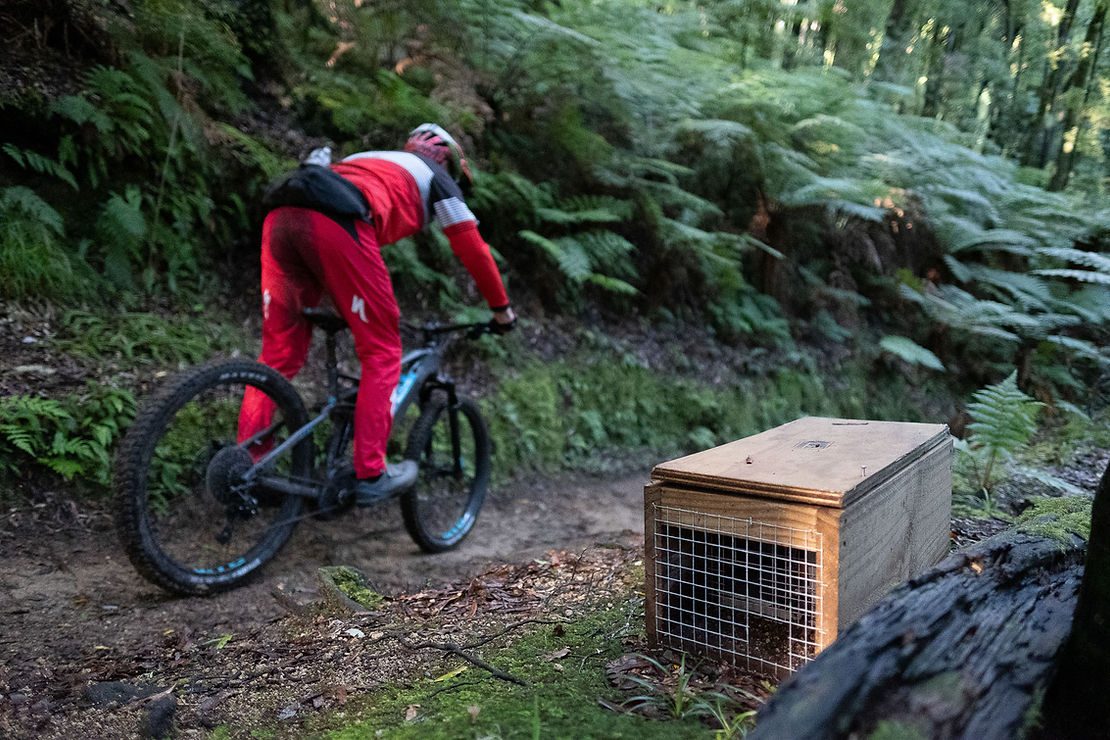
The Journey
The stuff that happens before saddling up to start a ride is all part of the experience, especially if you’re doing it with a sense of adventure, trying new things and going to new places with new riding buddies.
Before even entering Te Urewera, most visitors will come from the more populated northern side of the park - in our case, from Rotorua. The only township of note on the route in, is Murupara, a small town which is effectively the main gateway to Lake Waikaremoana and Te Urewera. Murupara was once an industrious place of extensive forestry, which there are still some remnants of. But like many of New Zealand’s small forest towns, Murupara has experienced hard times with the downturn of labour-based forestry operations in recent years - and there’s little other employment for locals. Our visit to the area included a quick stopover - in anticipation of a lunch break in a few hours’ time - to fill our packs with filled rolls and sandwiches at the local bakery. OK, and there may have been some slices of cake in our orders as well. Oh, OK, yes, some of us may have started eating our cakes before even leaving the car park, but we’re not here to judge each other, are we?!
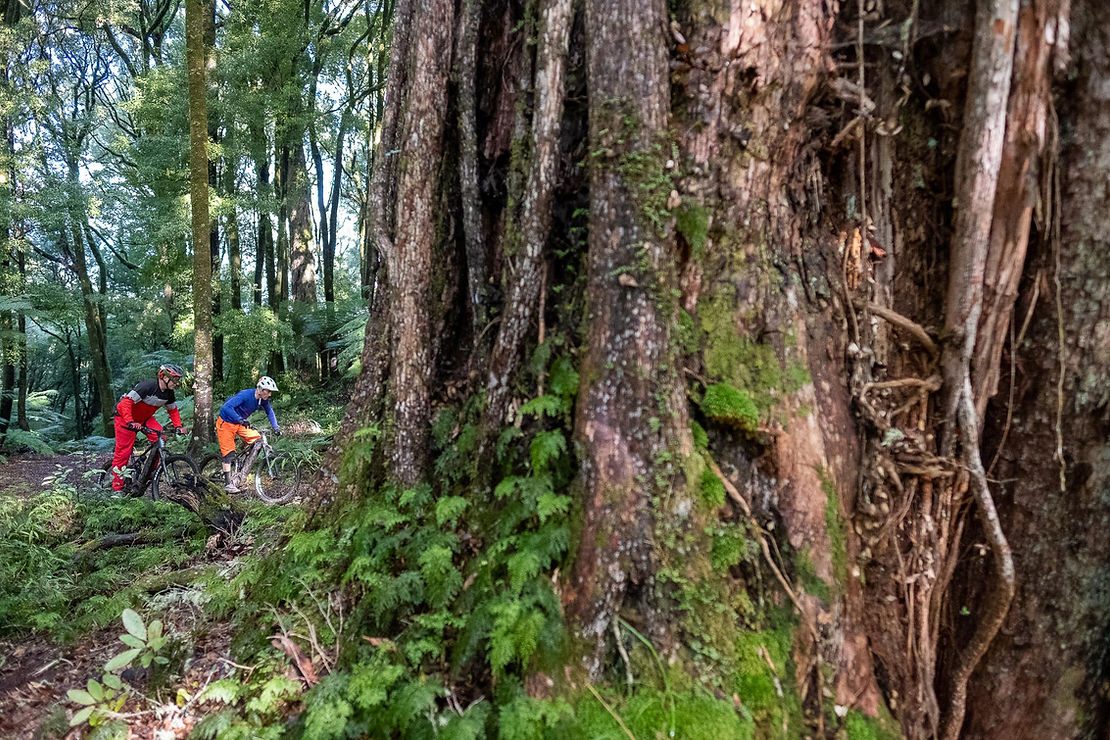
As we were getting the bikes and our gear ready at the trailhead, a large group of trampers arrived. They were a group of disadvantaged youth with ex-army wranglers guiding them through a bush craft exercise. The military leaders obviously had them under their guidance for a while - I’ve never been called ‘sir’ so much in my life, that must be what it’s like to be in the monarchy - though, to be fair, the youngsters also had plenty of comments along the lines of: “Chur, flash bike au”; and the ever-important thing kids want to know: “How much did that cost?”, quickly followed by, “What?! I could buy a car for that much!”
The Ride - Doing it Different
I’ve experienced the Moerangi trail many times, in a variety of ways: on different mountain bikes; doing it as a shuttled loop; riding it as an out-and-back; even bikepacking it on gravel bikes; and doing a heli-drop to the depths of the forest, to do a 30km trail run out.
Every time I’ve been on the Moerangi it has been epic and this time round we found another way to experience it: on e-bikes.
Apart from the nature of the riding itself, one of the notable differences with riding e-bikes is the ability to take more time to stop and look around. Although you can still work hard on an e-bike, you’re arguably fresher than you’d be on a regular bike. That equates to being more inclined to stop and savour the moment, the views and the sounds of the forest. In this case, it was also an opportunity to revisit the Whirinaki mountain bike loop, which is a separate track at one end of the Moerangi trail. I’d only done it once before, many years ago. In recent times, my objective of a day trip to Moerangi was to ride the main trail, either in a shuttled loop or as an out-and-back to as far along the trail as our group wanted to ride.
Riding the Whirinaki loop was great fun and a lot easier than Moerangi. The trail boasts gentler climbs than Moerangi, and there is significantly less elevation so what climbs there are aren’t sustained for long. Mellower gradients lead to less rain-damaged rutting as well, which can be a noticeable feature on the Moerangi, after a series of storms have been through the region.
But apart from the riding experience, the visual and auditory rewards are similar. As soon as we left the car park on the Whirinaki loop trail we were amongst towering podocarp trees - rimu, miro, matai, kahikatea and the mighty tōtara. At ground level the density of lush lime-green ferns is profuse. The heavy rains from the day before our ride adding another degree of vibrant freshness to the intensity of the undergrowth.
At times we Kiwis can take this sort of scenery for granted, especially if we have a primary objective based around a bike ride, and are focused on the ribbon of brown dirt in front of us. It’s when you’re with international visitors that you recognise how truly special New Zealand’s backcountry rides are. Or, as in our case, when we’re out for a good time, not a long time. Plenty of stops for photos meant we had ample opportunity to look around and truly savour the visual extravaganza that the central North Island’s native forest offers.
It’s not all peace and quiet though. At times the birdsong is noticeable and, to be honest, sometimes the piercing alarm calls of the Kaka are jarring - in a good way though. Their shrieks serve to remind us this isn’t our place, we’re merely temporary visitors in the grand scheme of things, and it’s a fitting prompt that beautiful native New Zealand fauna are the original inhabitants of this forest.
Although the Moerangi trail is most often ridden in a clockwise direction via shuttle drop off, I’ve often done it as an out-and-back from the River Road end of the trail. This involves a tough climb with about 600m of vertical gain, which is a correspondingly awesome descent on the return trip.
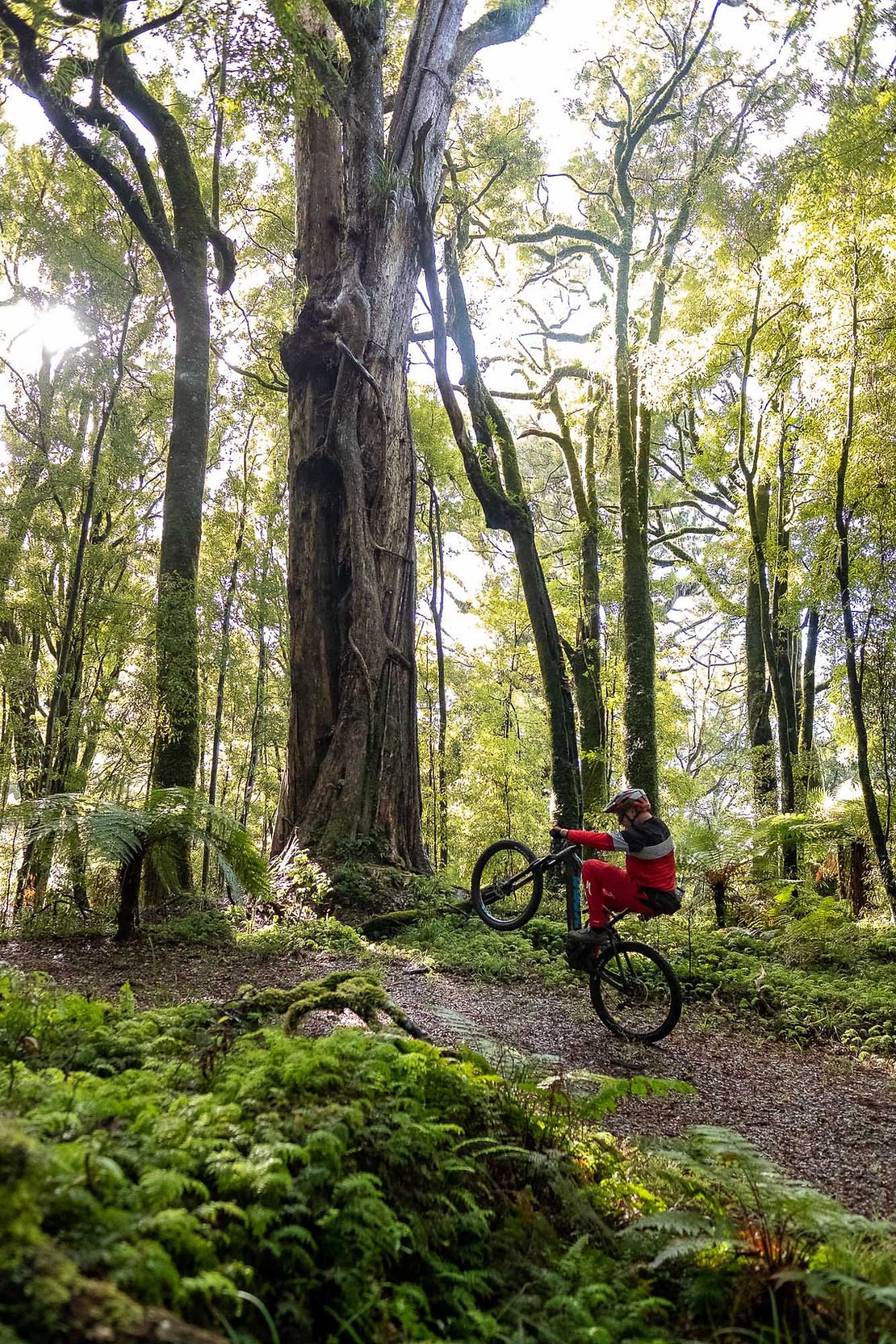
On an e-bike I got to describe the climb as something I never thought I’d say: “It was fun!” We rode every part except one short stretch of soft pumice. I don’t deny I’ve got a real bee in my bonnet with fellow riders who slag off e-bikes without having experienced them. I relish the opportunities they offer both to beginners, or riders with limitations for some reason, and to more experienced, capable riders. In our hands, on this day, we simply enjoyed every single second of riding. Although easily still able to get a solid amount of heavy breathing going on any given climb, the difference from a regular bike was that we were actually riding steep, rutted sections of trail that would quickly have had me walking on my regular bike.
As mentioned previously, I’ve ridden this trail a lot, so am acutely aware of my limitations on any of the technical climbing sections. On the Konas we were still working hard, but in a different way; looking much further ahead on the climbs than usual, because the greater speed meant we’d be coming into whatever was next at a greater pace than on a regular mountain bike. It was also vital to ensure we were in the gearing appropriate to keep a fast cadence throughout whatever we were climbing. Pedal assisted e-bikes simply stop assisting if their cadence/torque sensors sense the rider is only barely turning the cranks over. it’s a weird thing though, the low gearing/high cadence we were utilising effectively on the e-bikes would be completely impractical on a regular bike. On one of those, it’s often desirable to have a slightly tougher gear to crank through over tough obstacles on technical climbs. I’m no physicist (obviously, my wife tells me) but I figure it’s something about torque. All of that is somewhat moot though, because the more you ride an e-bike, the more intuitive it becomes as to what gearing is best for given sections, and how to best utilise the power assist.
The Bikes
I’d be remiss at this point if I didn’t explain a little about the bikes we were on for this adventure ride. Their nature had a significant part in shaping how our ride developed, and the high level of fun-factor we achieved.
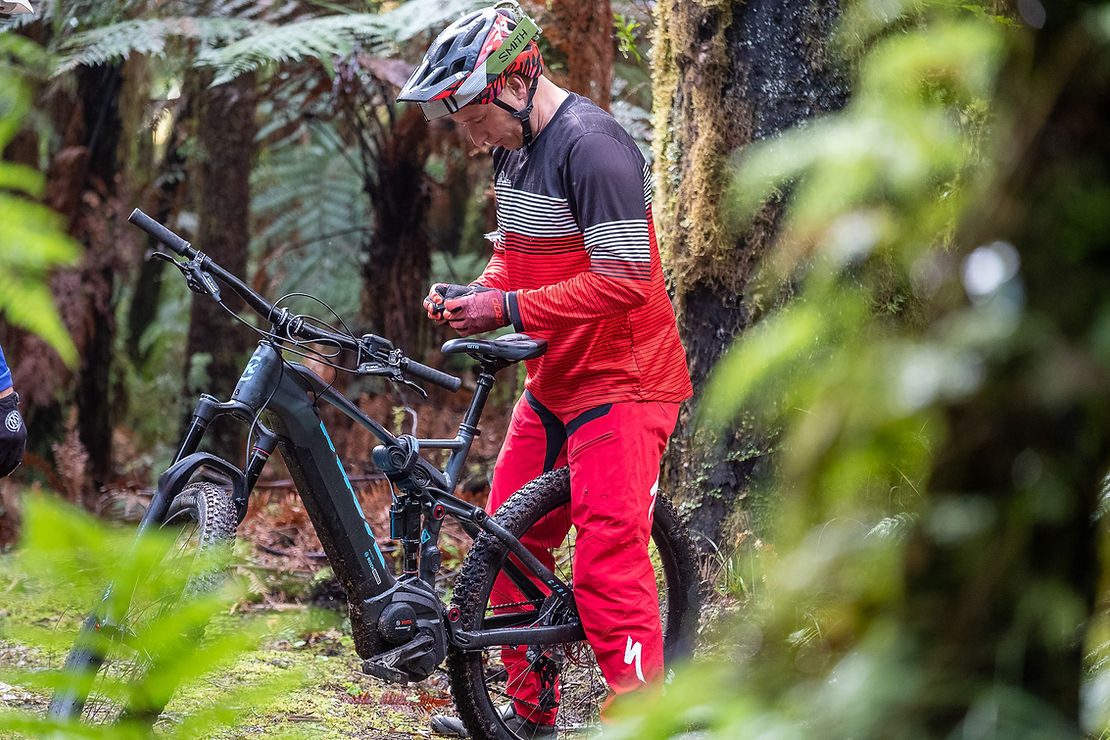
We were on Kona Remote CTRL models - featuring Bosch motors. These slot in amongst the lowest price points for proper, full-suspension electric mountain bikes. I say ‘proper’ to clarify they’re not bicycle shaped objects purporting to be mountain bikes, like many cheap monstrosities for sale on TradeMe.
Sure, at the price of the Konas there are compromises on specs: relatively short travel dropper posts; SRAM Guide brakes instead of Codes, which would be more practical for the speed and weight of an e-bike; and unusual choices for New Zealand conditions, like Maxxis Icon tyres. The Icons are great tyres, for a purpose, but not for those of us who push the boundaries of what is rideable, where traction is king for getting up, down or around any given section of trail. There are plenty of solid performers for critical components though - like RockShox Lyric forks up front and Monarch Plus shocks, with SRAM NX level drivetrain.
Overall, we came away impressed with the bikes. The geometry was on point, the design and construction of the frames was flex free and solid (a particularly important point with heavy and powerful e-bikes). The suspension was tuned appropriately to the rider and bike combo dynamics. To come away with these responses to the capabilities of the Konas, given the remote environs we were riding in, is no small compliment to be dishing out.
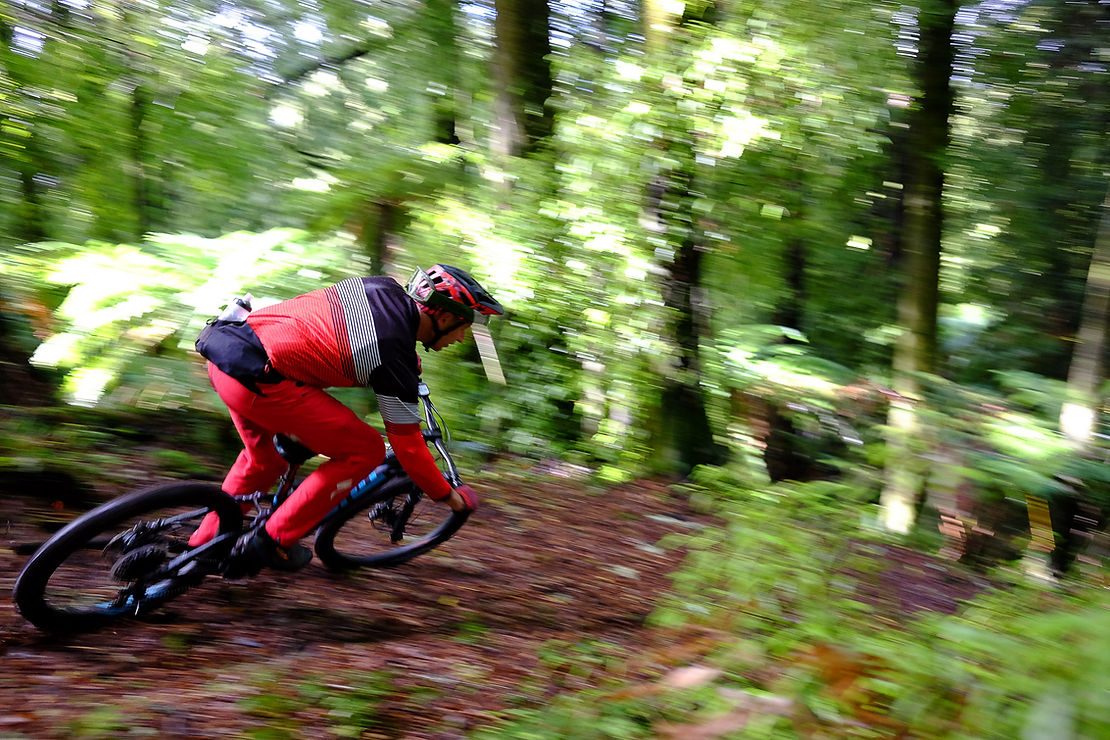
I believe it’s one of those things which is virtually impossible to quantify, but if you did try, it would be along the lines of: “For the lowest-priced, real mountain bike e-bikes available in NZ, we had 90% of the performance possible compared to uber-spendy ebikes upwards of $10k. But, and it’s an important ‘but’, we had 100% of the fun available from what e-bikes bring to rides like this”.
Random Outtakes
Unfortunately, I can tell you from painful experience that it is almost a rite of passage to encounter the native Onaonga plant on Moerangi rides. Although my fellow riders on this trip didn’t get to experience it, I ‘took one for the team’ by taking one step off the trail in the wrong place and getting an instant reminder of what the native stinging nettle Onaonga looks like - and why I should have remembered it from the last time it got its venomous little spikes into me. The skin on my shins is tingling as I write this now - a reminder to pay more attention to look where I’m stepping when I get off the bike to take a photo in the future.
Ah, the serenity. It truly feels like the middle of nowhere most of the time, although we did hear helicopters working occasionally. It’s possible they were tourism operations, hunters or fly fishermen, but it’s more likely - when it’s a busy aircraft flying around for extended periods - they were DOC workers. The recreational users tend to get a drop-off/pick-up and that’s it.
On a previous trip into this area, we spoke with some workmen waiting for their ride into the day’s work site. Their ride was a helicopter. In that instance they were bringing building supplies into the multiple DOC huts in the forest. Those workers also get on the tools to clear the trails which, because of the remoteness and rugged run-off of the terrain, are often subject to weathering from the rain and windfall of storms.
The trails have no views to speak of - not the sweeping vista variety anyway - but the views within the forest are other-worldly, with the verdant greenery of the forest floor and the imposing old-growth native trees putting you in your place.The towering native trees, and the tortuous Giger-like displays of northern rātā gradually strangling their giant host trees, serve as a reminder of how puny we are. (Rata is one of New Zealand’s tallest flowering trees, beginning life as a plant perched on a host tree, high in the forest canopy. Its roots eventually grow down to the forest floor, finally enclosing the host tree and producing a huge tree up to 25 metres high with a trunk up to 2.5 metres in diameter.)
Takeaways
Consider your favourite adventure ride. Can you do it differently? Ride a loop in the opposite direction to usual (if it’s not a one-way trail, obviously); pack a picnic and plan to stop and soak in your surrounds instead of trying to smash out a new Strava PB; take a mate who hasn’t done it before and bask in their enjoyment of it; do it on a different bike if you’re fortunate enough to have a choice. However you do it, there is potential to rediscover and reinvigorate your enjoyment of a trail you know - or at least think you know. As an added bonus, whether you’re South Island based and it’s a major holiday trip, or reside in the North Island and it’s easier to get to - ensure you put the Moerangi and Whirinaki trails on your bucket list. You won’t regret it.
Thanks to Neil Hutton and the team at DOC Whakatane, Earl Rewi and Sharon Nikora of Ngāti Whare and the tangata whenua of Te Urewera.
Check with the Te Urewera DOC office to make sure the trail is open if you’re doing it in winter or when there have been storms in the area – it is prone to slips after heavy rain.
This is a true backcountry ride, so ensure you’re ready for it with suitable gear for trailside bike repairs, and have enough food and water. There is virtually no cell phone coverage to speak of on the trail.
Words and Images: Nick Lambert
News: Trek's 2021 Slash
Trek’s new 2021 Slash is here. What’s new? I hear you ask. Well, a bump in travel with 160mm rear and 170mm front, a removable Knock Block, all models come with internal frame storate, a larger seat tube diameter, threaded bottom bracket and a few tweaks to the geo: slightly slacker head tube, steeper seat tube and a longer reach. What do you think? We’re hoping to get our hands on one soon!
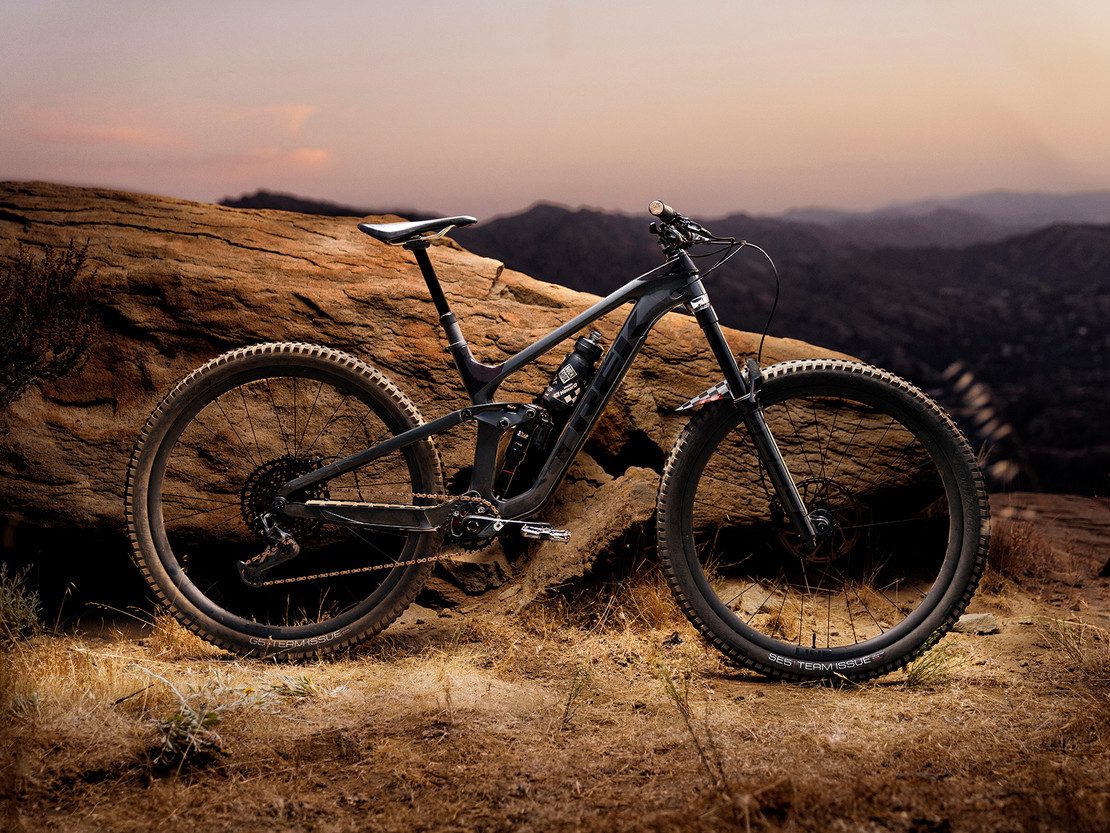
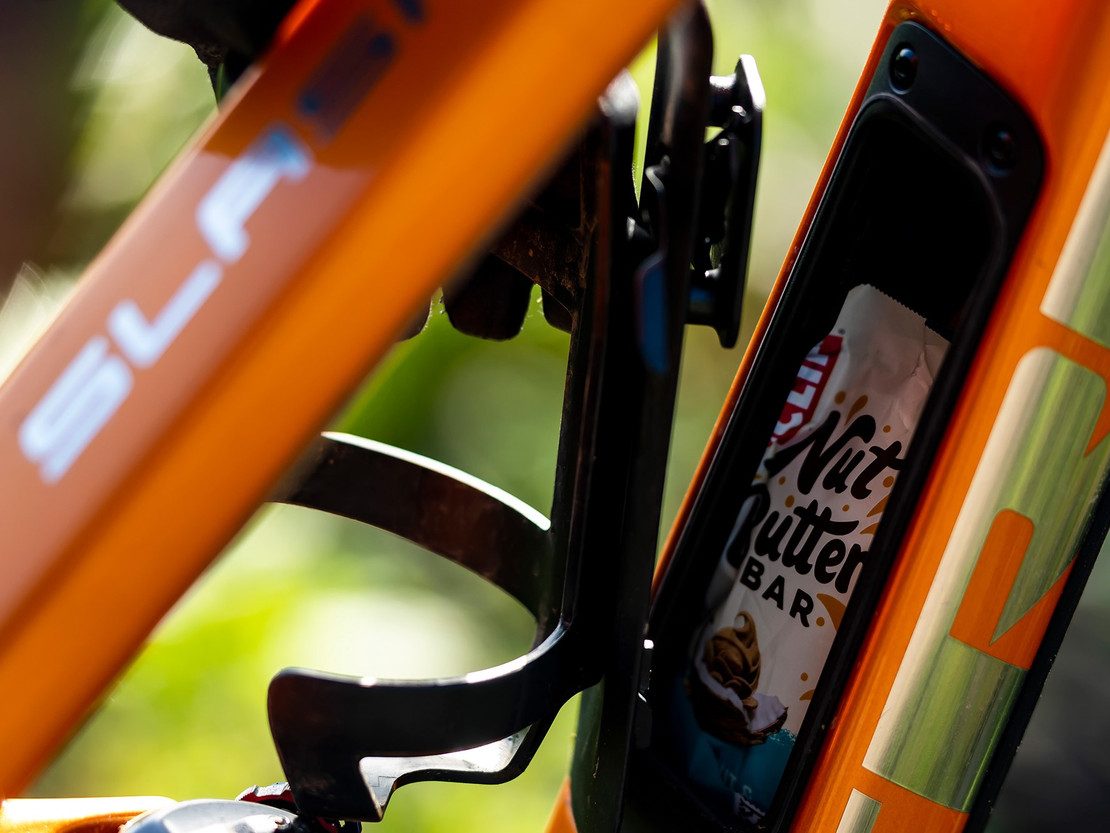


Video: Kona's Choose Shonky
Choose a steel frame, tapered headtube, adjustable dropouts and a threaded bb. Choose 142 hub spacing, choose gears or single speed. Choose frame only and build it your way or choose a complete build. Choose three piece cranks, a Manitou Circus Expert fork, WTB rims and Maxxis DTH tires. Choose jibbing through the streets, nose bonking, curb cutting, tire slashing and wall riding. Choose traffic dodging, tourist weaving, pedestrian hopping. Choose riding across town to pump tracks, pumping and weaving. Choose finding gaps and new lines. Choose high fives and sharing the stoke. Choose riding from sunrise to sunset. Choose spending time with quantity people, investing in good times. Choose life. Choose Shonky.
News: Commencal's new Meta Power EP8
"The appearance of the POWER in our range has shaken things up. When we decided to create electric versions of the META, the first point was clear - stick to the COMMENCAL DNA. In short, create a fun comfortable and efficient uphill and downhill bike. When we say POWER we mean motor, battery and electronic controls. This year again we trust Shimano. We continue to collaborate with the Japanese brand because of their technical advantages and the reliability of their engines.
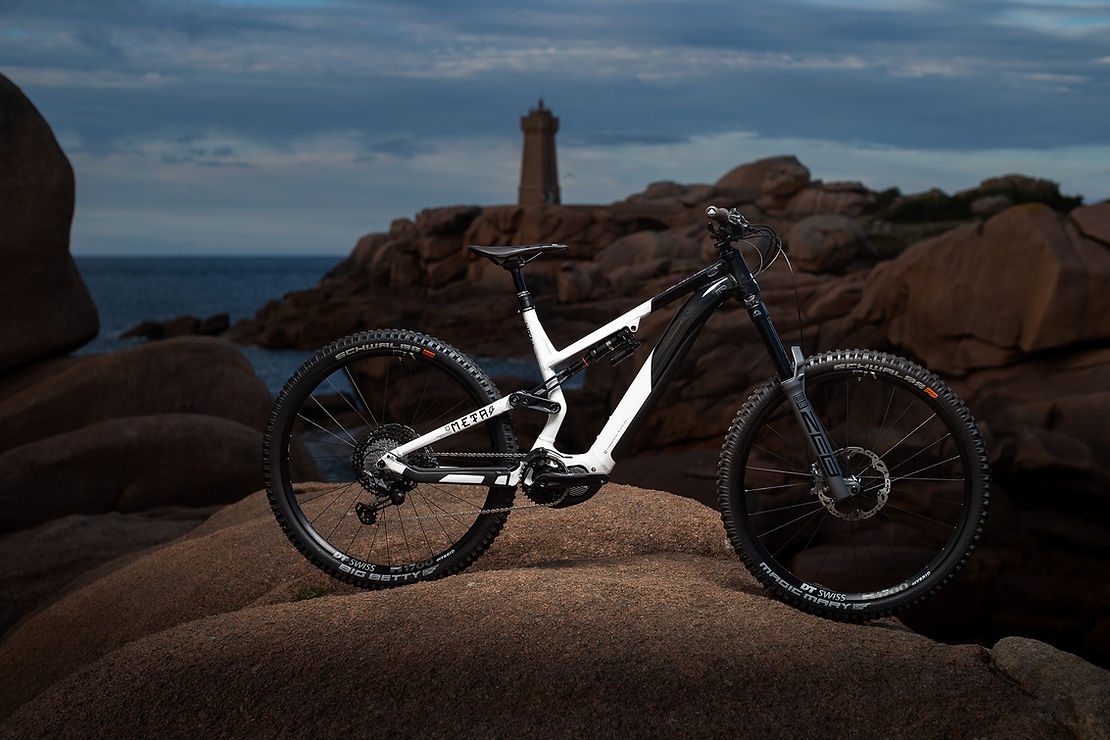
The reliability of our bikes has always been our priority and Shimano's reputation for that is well established. The numerous service centres all over the world are also an asset for a well-controlled after-sales service. Compactness, engine management and shape are the main advantages of these Shimano engines. A compact engine allows us to make a mountain bike as we understand it at COMMENCAL, with geometry and kinematics that are not compromised by the size of the engine.
Therefore we offer the following:
- A 27.5" model, the POWER SX, which is the 'edgy' POWER of the lineup. A bike made to lap as many runs as possible, with the rider being able to push through turns, jumps and try the steepest sections every time!
-A 29" model, the POWER 29, which represents pure performance. A monster on technical climbs with a disturbing ability on downhill sections! Definitely a friend of those who go up what they go down. It helps the rider through difficult sections and allows them to find flow where they wouldn't think it was possible.
For 2021 we're using the new EP8 engine. It now features a higher torque (85 N.m) whilst the power output curves are improved.The result is a softer bike with better control of grip and more reactive to pedal strokes. Not only does it gain in performance, this new engine is also intended to be much quieter and more discreet than the older generations. The new 630Wh battery hugely increase its capacities, and that's not all! The positioning of the engine has allowed lowering of the battery which helps to improve weight distribution. A new engine mount combined with a new generation engine guard both keep the unit neat in size and reduce the risk of impact with the ground.
Finally, with the seat tube angle straightened by one degree, the META POWER is more responsive, more acute. Combined with the performance and quality of the EP8 engine management, this bike can go anywhere! The look of this new bike has also evolved in depth. It's very simple, everything's new! The sharper lines clearly underline the improved performance.
Weight Distribution The distribution of weight is not to be overlooked on an ebike. We have reworked the fixation of the battery to the frame. The battery is larger due to its increased capacity, but its centre of gravity remains identical to the previous META POWER in order to maintain good stability. The META POWER therefore keeps its lively qualities and also its handling, which is so popular with its users.
Kinematics The kinematics of the META POWER revolve around the ‘4bar linkage’ Contact System which has been designed to offer: - A precise touch with the ground - Comfort - Less fatigue on large impacts - Dynamic behaviour when pushing fast and when pedalling Each shock has the appropriate settings, tested in advance for several months by our riders and engineers in various different conditions.
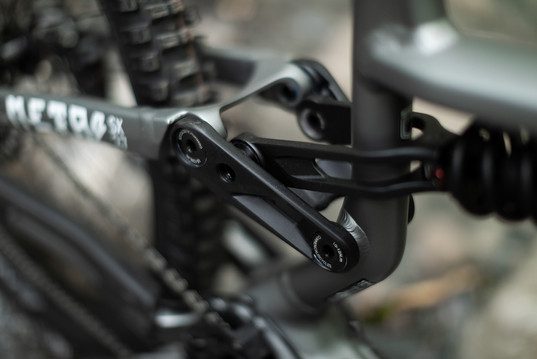
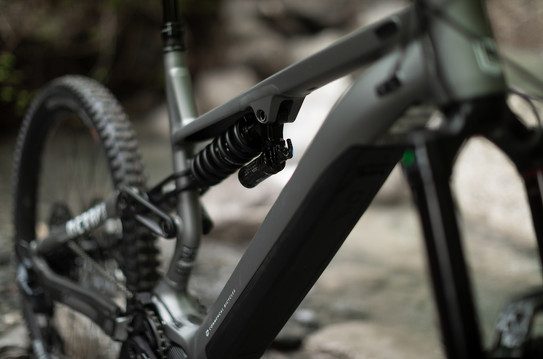
Geometry As we’re always in search of the best balance, the geometry of the META POWER has evolved for 2021. The seat tube angle is straightened by one degree to make it easier to climb steep slopes. The fork offset is reduced to promote sharper steering. In the same vein, the head angle is slackened in order to maintain maximum stability. The result is more precise and responsive steering.
Bearings For several years now we’ve been using oversized bearings from Enduro Bearings for long-term reliability.
Finishing Our DNA drives us to develop and improve the finishing details year after year. The engine support/mount has been completely redesigned to incorporate one of the advantages of the new EP8; its reduced size and increased clearance of the ground. For the same reason, the engine protector has been reworked but obviously still has high impact resistance. We have integrated it into the line of the bike even better with the addition of a right-side engine cover specific to the META POWER.
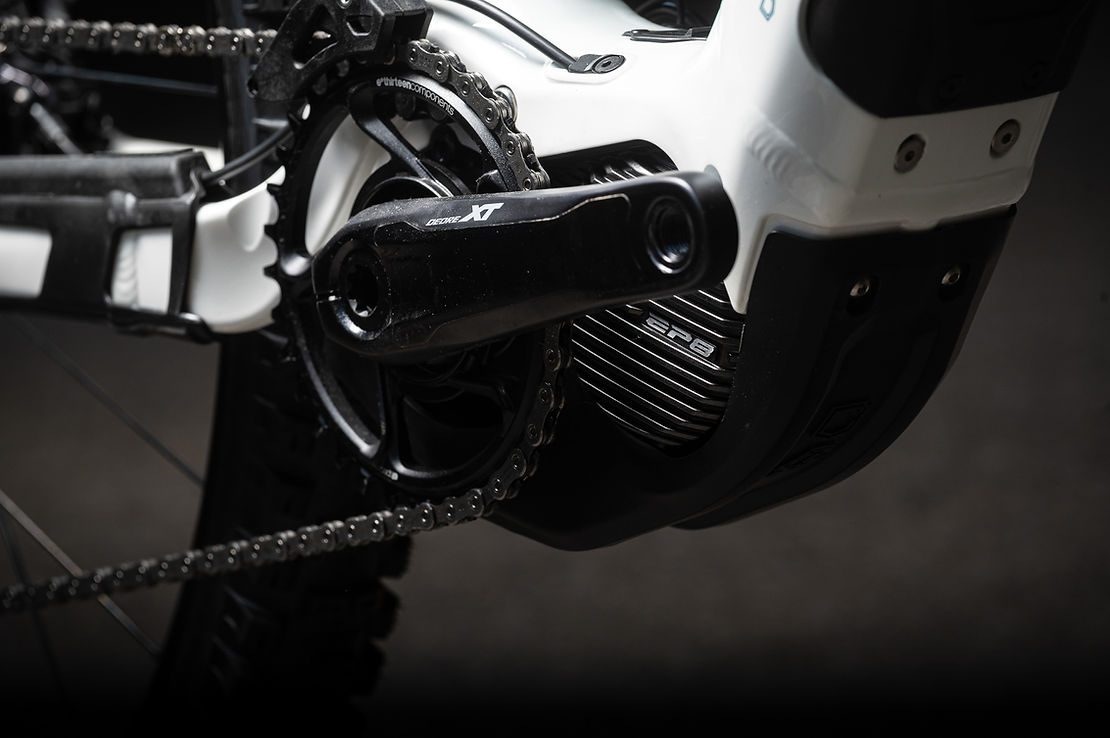
The charging plug is now placed on the new engine mount which makes it easier to access. The new more compact chain guide is also attached directly to the engine mount. A significant element of change is that the META POWER 2021 now features a new top tube. Modernised, it offers a stiffness consistent with the down tube.
Wheels The electric capability of an eMTB creates particular stresses on the wheels because of the pure power of the engine and the additional weight of the electrical system. Performance and reliability are two elements on which we make no concessions. Significantly, we use specific rims with an internal width of 30mm and a thicker wall than on a conventional enduro rim. The spokes are also thicker with reinforced heads to withstand the additional efforts of the engine and braking. DT SWISS Hybrid hubs have also undergone special work with reinforced axles, a steel freehub body, a more resistant rachet drive system and oversized bearings.
Suspension Adapting the suspension to eMTB specific use is essential to have a compatible frame which is effective downhill as well as uphill. As the mass transfers are greater than on a classic bike, we’ve worked on specific settings with our suspension partners to ensure that they correspond to the new kinematics of the new META POWER.
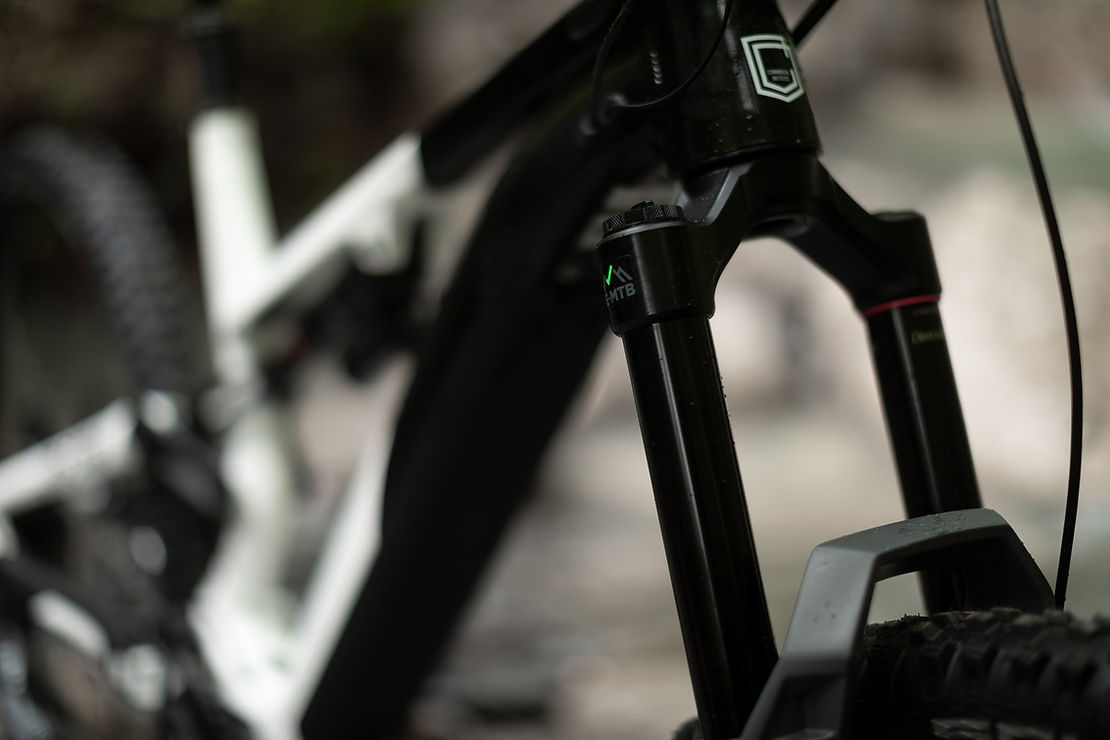
Steering precision is also key for downhill performance on rough trails. That’s why we choose forks with the best stiffness and especially, with 38mm uppers. Today we consider forks with this diameter to be essential for use with our META POWER 29 and SX.
Cockpit When it comes to riding on difficult trails or in remote areas, the possibility of a crash or two should be taken into account. This is the whole point of using a compact control screen that is not too exposed during the impact of the bike with the ground. The SW EM800 mode shifter is also very minimalist and well-shaped.
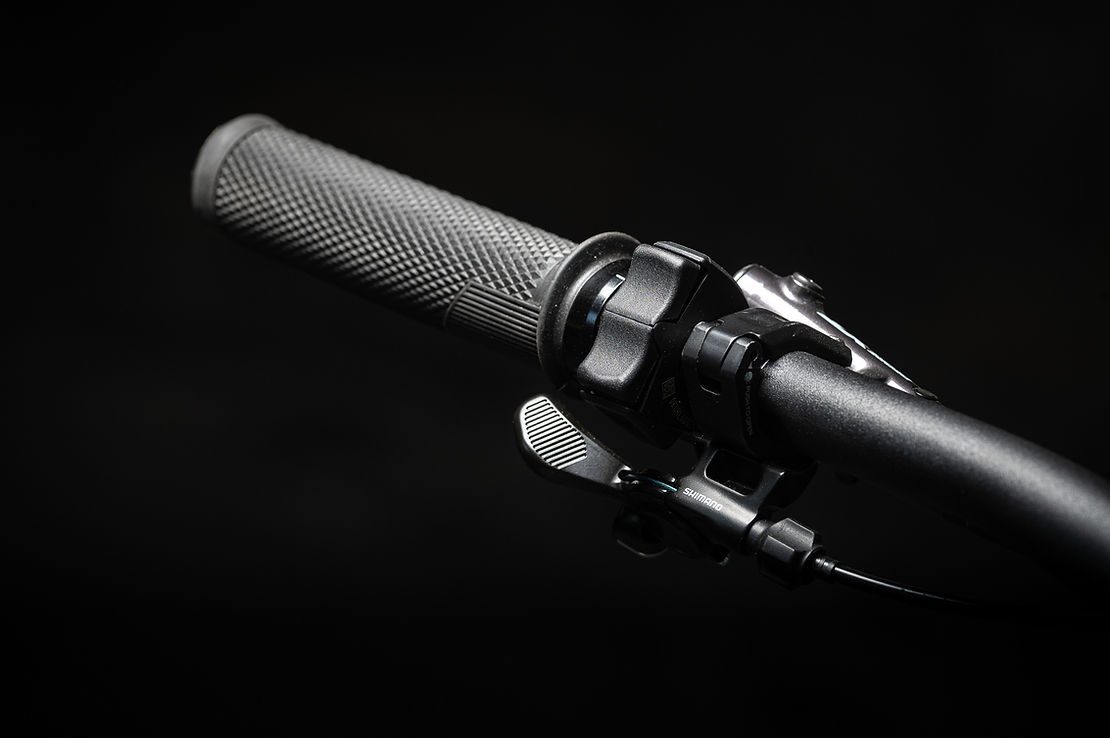
In the same sense, we’ve developed an ebike specific RIDE ALPHA handlebar that protects the cable that connects the shifter to the screen as it goes inside the handlebar. This prevents damage and the cockpit becomes neater and more streamlined.
Tyres We choose to use tyres that are specifically suited to ebiking and that can be used across as many different terrains as possible. The tread, profiles and rubber used therefore allow each and every rider to ride everywhere without worrying about punctures, whilst offering liveliness amongst other qualities.
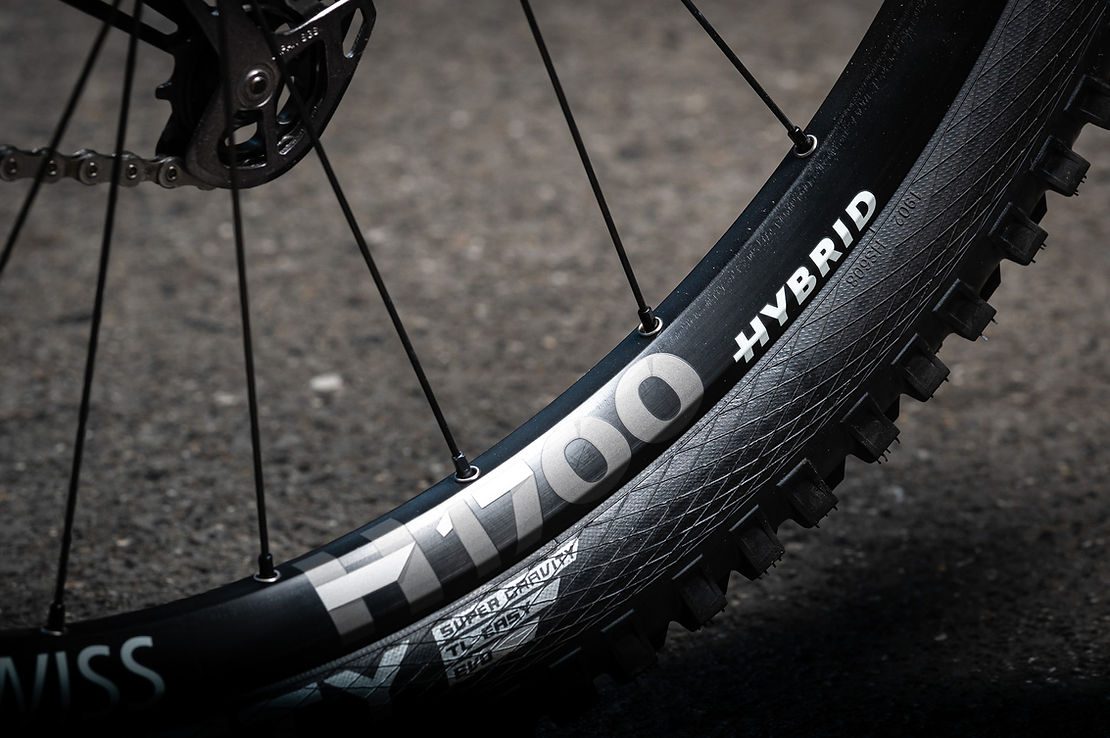
Furthermore, our various tests together with our racing experience have shown us that the section of the tyres used plays a major role in the precision and grip of the bike, especially when trying to go fast. We therefore favour tyres around 2.4″ which are suitable for 30mm internal rims, the ideal combo in a varying number of conditions."


